#an eight year gap in technology is entertaining me
Explore tagged Tumblr posts
Text



Felt cute, might floof up later
#these are all the front facing camera#I ain’t mad about it tbh#up until this I had the iPhone 7#and before that was a zte axon that I had until it wouldn’t hold a charge anymore#an eight year gap in technology is entertaining me#toto
55 notes
·
View notes
Text
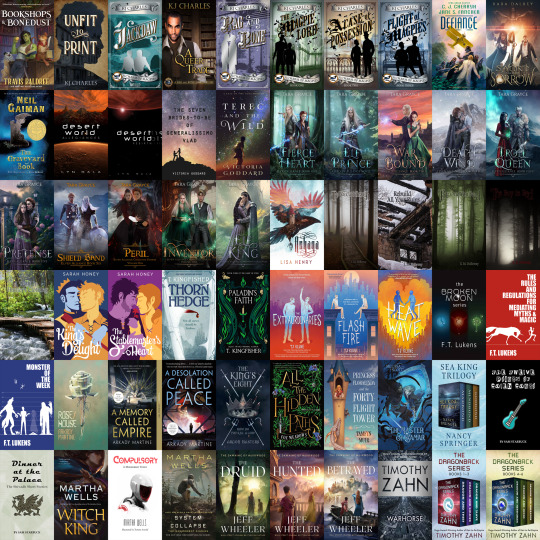
Reading Recap 2023
Did one of these last year for 2022 and decided to do one again this year for 2023.
These are the published (including self-published) books that 1) I added to my library within the last year, that 2) were new to me, and 3) actually got read cover to cover at some point in 2023. It works out to 60 books, three times as many books as last year (granted some of these are short stories, not even novellas or novels - but then a few are anthologies so it sort of balances out).
(Yes, I do read a ridiculous amount, considering this is only the tip of the iceberg of what I've actually read over the last year.)
Ended up finding a lot of older stuff on good sales, and also fell into reading some fantasy romances and a few YA things as well. Sadly there are some reputedly quite excellent books that I bought this year that I either never got around to reading, or started in on and then got distracted by something I wanted to read more, and never got back around to, so there's a pile of stuff that'll never manage to show up on one of these posts.
Books and/or series I particularly enjoyed, in no particular order:
Bookshops & Bonedust, Travis Baldree - great to have a prequel for Legends & Lattes, really good story.
A Charm of Magpies series of series, K.J. Charles - interesting historical queer magic-as-technology romances.
Defiance, the start of the latest (and probably last) trilogy in the Foreigner series of series by C.J. Cherryh (Book #22!!! And yes I re-read the other 21 before diving into this latest addition). So glad she kicked cancer's ass and is still writing; I am on tenterhooks for the next two books, waiting to see if my main guess about what this last story arc will focus around will be right.
Graveyard Book, Neil Gaiman - how have I gone this many years without actually reading this one!? Awesome idea, told with his usual (very high) skill.
Elven Alliance series, Tara Grayce, saw it mentioned here on Tumblr on a post wishing for stories where the Princess leans into the arranged marriage rather than revolting against it. Got curious, bought the first book and then just kept buying until I ran out of books.
Princess Floralinda and the Forty Flight Tower, Tamsyn Muir - think this was another one that was mentioned in the notes on the same thread as previous, or possibly in a similar one about female characters who win through traditional female skills rather than by being badasses who insisted on learning male ones. It's mostly a self-rescuing Princess trope in this one.
Thornhedge and A Paladin's Faith, T. Kingfisher. Of course I love both of them. I hope she also kick's cancer's ass and continues writing for some time to come.
The Master of Samar, Melissa Scott - have loved her books for decades, but there's a big gap in my collection from the years when I could only rarely afford new books. This is one of the books I missed reading, and one of her very rare forays into fantasy rather than science fiction (and it's an entertaining read).
The Sea King trilogy, Nancy Springer - another old favourite with books I missed getting when they were new. Interesting story. Made me think a little of the Epic of Gilgamesh, at least in terms of having a king and someone seen as more barbarous in nature as his best friend.
Warhorse and The Dragonback series, Timothy Zahn - author I never got around to trying back in the day, noticed a bunch of his stuff on sale, bought one to try, liked it, have bought more.
The King's Eight, Argon Masters - one of a number of books I read this year that is a published work by a fanfiction author whose works I enjoy. Was reading some of their not-my-fandom works (which yes I sometimes do when I enjoy an author enough - see also "how to trip and fall into new fandoms you have zero knowledge of"). Saw a casual mention of the book in an author's note, wandered off to grab and read it. Have already read it twice, it's excellent. Hope they publish more.
Also oh DAMN I just realized I didn't include the covers for Katherine Addision's Doctrine of Labyrinths series in the image above, I read and enjoyed those as well. Make that 64 books that met my criteria.
Edited to add: And doh, one of the covers for the Desert World trilogy by Lyn Gala has also gone missing. Make that 65 books.
2 notes
·
View notes
Text
I just realized I didn’t post that 2007 Rolling Stone article I posted about here.
Billie Joe Armstrong
The Green Day leader talks Bush, Britney and being a middle-aged punk for our 40th anniversary.
DAVID FRICKE
Posted Nov 01, 2007 8:19 AM
You have two young sons. What kind of America will they inherit?
This war has to finish before something new blossoms. There's no draft — that's why none of the kids give a shit. They'd rather watch videos on YouTube. It's hard to tell what's next — there is so much information out there with no power to it. Everything is in transition, including our government. Next year, it's someone else in the White House. There's no way to define anything. It's Generation Zero. But you gotta start at zero to get to something.
Is there anyone now running for president who gives you hope for the future?
Barack Obama, but it's a bit early to tell if this is the guy I like. I get sick of the religious-figure thing. People don't question their rulers, these political figures, just as they don't question their ministers and priests. They're not going to question George Bush, especially if he goes around talking about God — "I'm going to let God decide this for me. He's going to give me the answer." The fear of God keeps people silent.
When did you first vote in a presidential election?
In 1992. I was twenty. I voted for Clinton.
Did you feel like you made a difference?
Yeah. The Eighties sucked. There was so much bullshit that went along with that decade. I felt like Clinton was a fresh face with fresh ideas. There were times when he was dropping bombs, and I'm thinking, "What the fuck are you doing?" But he became a target. We have this puritanical vision of what a leader is supposed to be, and that's what makes us the biggest hypocrites in the world. We got so inside this guy's sexual habits. Now we have a president going around, killing in the name of what? In the name of nothing.
What did you accomplish with your 2004 anti-Bush album, "American Idiot"? He was re-elected anyway, and the war in Iraq is still going on.
I found a voice. There may have been people disenfranchised by it. People have a hard time with that kind of writing: "Why are you preaching to me?" It does sound preachy, a bit. I'm a musician, and I want to say positive things. If it's about self-indulgent depression or overthrowing the government, it's gotta come from my heart. And when you say "Fuck George W. Bush" in a packed arena in Texas, that's an accomplishment, because you're saying it to the unconverted.
Do you think selling nearly 6 million copies of that album might have an effect on the 2008 election? A kid who bought it at fifteen will be voting age next year.
I hope so. I made it to give people a reason to think for themselves. It was supposed to be a catalyst. Maybe that's one reason why it's difficult for me to write about politics now. A lot of things on that record are still relevant. It's like we have this monarchy in politics — the passing of the baton between the Clintons and the Bushes. That's frightening. What needs to happen is a complete change, a person coming from the outside with a new perspective on all the fucked-up problems we have.
How would you describe the state of pop culture?
People want blood. They want to see other people thrown to the lions. Do audiences want rock stars? I can't tell. You have information coming at you from so many areas — YouTube, the Internet, tabloids. Watching Britney Spears the other night [on the MTV Video Music Awards] was like watching a public execution. How could the people at MTV, the people around her, not know this girl was fucked up? People came in expecting a train wreck, and they got more than they bargained for.
She was a willing conspirator. She didn't say no.
She is a manufactured child. She has come up through this Disney perspective, thinking that all life is about is to be the most ridiculous star you could be. But it's also about what we look at as entertainment — watching somebody go through that.
How do you decide what your children can see on TV or the Internet? As a dad, even a punk-rock dad, that can make you conservative in your choices.
I want to protect them from garbage. It's not necessarily the sex and drugs. It's bad drugs and bad sex, the violence you see on television and in the news. I want to protect them from being desensitized. I want them to realize this is real life, not a video game.
The main thing I want them to have is a good education, because that's something I never had. Get smart. Educate yourself as much as you can, and get as much out of it, even if the teacher is an asshole.
Do you regret dropping out of high school?
Life in high school sucks. I bucked the system. I also got lucky. My wife has a degree in sociology, and there are conversations she has — I don't have a fucking clue what they're talking about. College — I could have learned from that.
But I was the last of six kids. At that point, my mother was fifty-eight, and she threw up her hands — "I'm through with this parenting thing." Also, I could not handle authority figures. But I wouldn't say I'm an authority figure for my kids. I provide guidelines, not rules.
What is it like being a middle-aged punk? Isn't that a contradiction in terms?
It's about the energy you bring with you, the pulse inside your head. I want to get older. I don't want to be twenty-one again. Screw that. My twenties were a difficult time — where my band was at, getting married, having a child. I remember walking out of a gig in Chicago, past these screaming kids. There were these punks, real ones, sitting outside our tour bus. One girl had a forty-ouncer, and she goes, "Billie Joe, come drink with us." I said, "I can't, I've got my family on the bus." She goes, "Well, fuck you then." I get on the bus, and my wife says, "Did that bitch just tell you to fuck off? I'm gonna kick her ass right now." I'm holding her back, while my child is naked, jumping on the couch: "Hi, Daddy!" That was my whole life right there — screaming kids, punks telling me to fuck off, my wife getting pissed, my naked son waiting to get into his pajamas.
There's nothing wrong with being twenty-one. It's the lessons you learn. At thirty, you think, "Why did I worry so much about this shit?" When I hit forty, I'll say the same thing: "Why did I worry about this shit in my thirties?"
What have you learned about yourself?
There is more to life than trying to find your way through self-destruction or throwing yourself into the fire all the time. Nihilism in punk rock can be a cliché. I need to give myself more room to breathe, to allow my thoughts to catch up with the rest of me.
Before Dookie, I wasn't married and I didn't have kids. I had a guitar, a bag of clothes and a four-track recorder. There are ways you don't want to change. You don't want to lose your spark. But I need silence more than I did before. I need to get away from the static and noise, whereas before, I thrived on it.
Are you ready for the end of the music business? The technology and its effect on sales have changed dramatically since Green Days' debut EP — on vinyl — in 1989.
Technology now and the way people put out records — everything comes at you so fast, you don't know what you're investigating. You can't identify with it — at least I can't. With American Idiot, we made a conscious effort to give people an experience they could remember for the rest of their lives. It wasn't just the content. It was the artwork, the three acts — the way you could read it all like someone's story.
Is music simply not important to young people now the way it was to you as a kid?
People get addicted to garbage they don't need. At shows, they gotta talk on their phones to their friend who's in the next aisle. I was watching this documentary on Jeff Tweedy of Wilco [Sunken Treasure]. He was playing acoustic, and he ends up screaming at the audience: "Your fucking conversation can wait. I'm up here singing a song — get involved." He wasn't being an asshole. He was like, "Leave your bullshit behind. Let's celebrate what's happening now."
We need music, and we need it good. I took it very seriously. There's a side of me where music will always send chills up my spine, make me cry, make me want to get up and do Pete Townshend windmills. In a lot of ways, I was in a minority when I was young. There are people who go, "Oh, that's a snappy tune." I listen to it and go, "That's the greatest fucking song ever. That is the song I want played at my funeral."
Now that you've brought it up, what song do you want played at your funeral?
It keeps changing. "Life on Mars?" by David Bowie. "In My Life," by the Beatles. "Love," by John Lennon.
Those are all reflective ballads, not punk.
I disagree. They are all honest in their reflection. The punk bands I liked were the ones who didn't fall into clichés — the Clash, the Ramones. The Ramones wrote beautiful love songs. They also invented punk rock. I'd have to add "Blitzkrieg Bop" to the list.
What is the future of punk rock? Will it still be a voice of rebellion in twenty years?
It's categorized in so many different ways. You've got the MySpace punks. But there is always the subculture of it — the rats in the walls, pounding the pavement and booking their own live shows. It comes down to the people who are willing to do something different from everybody else.
You are in a different, platinum-album world now. What makes you so sure that spirit survives?
I'm going on faith — because I was there. Gilman Street [the Berkeley, California, club where Green Day played early shows] is still around. And that's a hard task, because there is no bar — it's a nonprofit cooperative. It's like a commune — this feeling of bucking the system together, surviving and thriving on art. Punk, as an underground, pushes for the generation gap. As soon as you're twenty-five years old, there's a group of sixteen-year-olds coming to kick your ass. And you have to pass the torch on. It's a trip to have seen it happen so many times. It gives me goose bumps — punk is something that survives on its own.
12 notes
·
View notes
Text
Signal Boost: Male OCs
Seeing @darknightfrombeyond‘s post to call for male ocs reminded me of a conversation I had with her (that male ocs don’t get a lot of love) but then reminded me that we have a lot of main character male ocs that we either don’t do a lot with (on here) or that others just don’t know about. So here’s our list of male ocs with their fc, fandom, and pairing, and I implore you to add all of yours so that we can see all the fantastic male ocs of the oc community. Put under a read more (after the first one) since I don’t want to clog up your feeds! :) -Riley
Reed Jackson

Fandom: Multi-Fandom; 3 Ninjas, Mighty Ducks, Suite Life, Big Time Rush, Just My Luck, Chicago Fire, Chicago PD, Forever, etc.
Pairing: Renee Jackson
Reed is an Australian who loves life, learning, and having fun. He almost always has a smile on his face and will do anything to have a good time. However, he does have a tendency to get sucked into his work at the detriment of spending time with his family as much as he tries to be a present father. A rocket scientist, he double majored in aerospace technology and mechanical engineering at NYU where he met his wife before moving back to Australia to start their family. In many fandoms, he’s deceased, but there are a few where he’s alive.
Julius Jackson

Fandom: Multi-Fandom; 3 Ninjas, Mighty Ducks, Suite Life, Big Time Rush, Just My Luck, Chicago Fire, Chicago PD, Forever, etc.
Pairing: Brittany McNair
Julius is the eldest of the Jacksons, and is probably one of the quieter of them. As the oldest, he works to live his own life despite feeling the need to look after his brothers and sisters. In fandoms where his parents are deceased, he is taken in by his grandparents and lives apart from his siblings. Because of this, he isn’t as close to them as he’d like to be, feeling he couldn’t protect them from the distance, and feels immense guilt over it.
Patrick Jackson

Fandom: Multi-Fandom; 3 Ninjas, Mighty Ducks, Suite Life, Big Time Rush, Just My Luck, Chicago Fire, Chicago PD, Forever, etc.
Pairing: Katie Knight
Patrick is a fun-loving boy who likes to make sure other people are happy...so he plays up his being dumb at times just to get a smile on their face. He loves to surf and despite not enjoying school so much, loves to learn in his own time. But behind his smile and happy-go-lucky attitude, he tends to be a bit insecure in his masculinity as he feels he’s not physically strong enough to stop the abuse he and his siblings face from their foster father after their parents die, and shows it at the worst times. As his sister says, he’s a “loveable asshole”.
Noah Jackson
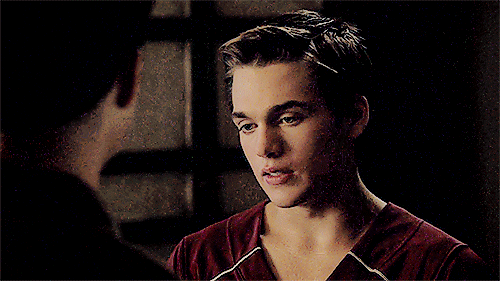
Fandom: Multi-Fandom; 3 Ninjas, Mighty Ducks, Suite Life, Big Time Rush, Just My Luck, Chicago Fire, Chicago PD, Forever, etc.
Pairing: Lizzie Zevon
Noah is the quieter one of the twin boys, and is more independent, but is always there to back Patrick up or call him out. He’s an observer, preferring to get an idea of other people before showing his true self. For such a quiet guy, he has an obnoxiously loud laugh that startles people when they hear it. Noah is very compassionate and protective of his family.
Sydney Jackson

Fandom: Multi-Fandom; 3 Ninjas, Mighty Ducks, Suite Life, Big Time Rush, Just My Luck, Chicago Fire, Chicago PD, Forever, etc.
Pairing: Anna
Sydney is the youngest of the Jacksons and is the smartest. He’s part of MENSA and continuously uses his smarts to get his siblings’ attention (despite strongly feeling he’s their favorite sibling). He doesn’t remember his parents because he was one when they died and it’s been a source of sadness for him, though he doesn’t really talk about it until he’s older. Due to his smarts, he doesn’t have many friends his age, save for Anna, and often latches onto his brothers and sisters if not their friends for that social interaction and attention. As he gets older, he tends to be a bit more of a sarcastic jerk, and is admitted to be spoiled by his brothers and sisters who didn’t want him to feel left out due to the gap in their ages.
Ronan McGuire

Fandom: Bandfiction/Big Time Rush
Pairing: Mrs. Knight
Ronan McGuire is as laid back as he is serious. He’s the middle child in his family and quickly realized his parents didn’t have much time for him with his older brother and younger brother getting their attention. He entertained himself by making music and playing instruments before ultimately emancipating himself, going to the Berklee College of Music and eventually becoming one of the youngest professional music producers before ultimately starting his record company; Blazing Phoenix. He’s Gustavo’s friend despite how the two annoy each other and ultimately adopts the Jacksons after years of working with them and trying to prove the abuse they go through.
Brady Nash

Fandom: Arrowverse, MCU
Pairing: Haven’t said exactly who yet, I have three ideas. One who was just recently introduced.
Brady started out in the Flash and The Flame series at eight years old. Now twelve, he’s really come into his own with his powers and his identity as Shadowhunter. Starting out the series, Brady is a very excitable and emotionally intelligent young boy who greatly loves his mother and finds waht she can do with her powers to be “very cool”. As he gets older and sees what happens with The Flash and Flare, and has his own adventures being a meta, he matures faster and takes on a teasing personality that hinges on sarcasm. He is very protective of his mother and friends and finds going out to fight metas to be more “cool” than “serious”, often having to be scolded to remember how dire their situation is.
Connor Hawke
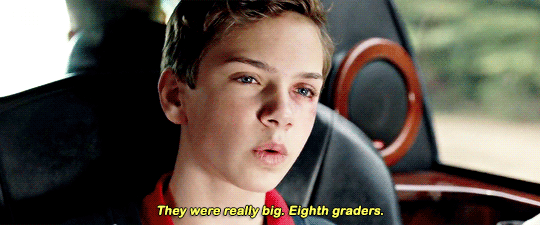
Fandom: Arrowverse
Pairing: Leah Brooklyn
Connor Hawke is my version of Arrow’s “William Clayton”. I basically took him and made him into an OC before it was revealed he was William and not Connor, but loved the idea of Connor so much that I took him as my own. Connor is Brady’s best friend. Despite being in the same grade since first grade, they didn’t really meet and become friends until third grade. (This is mostly due to Cadence’s want to keep Brady away from questioning of how old his mom was when she had him, and any potential moments of finding out about her powers). Connor is a sweet and intelligent child who is a bit more reserved than Brady, but quickly learns and accepts Brady’s powers and identity as Shadowhunter finding it to be “Very cool”. However, he quickly learns how dangerous things can be for Brady and other metas in their school and finds a way to figure out who the other metas are and communicate with them via a private social media account to give them tips and tricks to hiding their powers if needed and honing them if they choose. Connor, despite not having any powers, is always at Brady’s side and helps him whenever he needs it with little to no judgement.
#ocappreciation#toalltheocsivelovedbefore#allaboutocs#marvelocsdaily#dailycomicbookocs#reed jackson#julius jackson#patrick jackson#noah jackson#sydney jackson#ronan mcguire#brady nash#connor hawke#calling all male ocs#signal boost#multi-fandom
15 notes
·
View notes
Text
Margaret “Daisy” Suckley

President Roosevelt himself took this photograph of Daisy Suckley in the White House as she went through various papers, February 10, 1942. (Photo: FDR Presidential Library & Museum)
This post was written by Keith Muchowski, an Instruction/Reference Librarian at New York City College of Technology (CUNY) in Brooklyn, New York. He blogs at thestrawfoot.com.
Margaret Suckley was an archivist at the Franklin D. Roosevelt Presidential Library in Hyde Park, New York from 1941 to 1963. But she was much more than that.
“Daisy” Suckley, as she was known to friends and family, was born in Rhinebeck, New York in 1891 and grew up on Wilderstein, the family estate on the Hudson River not far from the Roosevelts’ own Springwood in Hyde Park. This was a small, rarefied world and in the ensuing decades Daisy saw sixth cousin Franklin’s rise to prominence. She eventually became one of his closest friends and confidants, sharing the good times and the bad with the country’s only four-term president. Ms. Suckley was there for Franklin in the 1920s when he was struck paralyzed from the waist down with polio, knew him during his years in Albany when he was New York governor and he became a national figure, attended the presidential inaugural in 1933 in the depths of the Great Depression, offered a discreet and comforting ear during the dark days of the Second World War when, as commander-in-chief, he made difficult and lonely decisions affecting the lives of millions around the world. Finally, Daisy was one of the inner circle present in Warm Springs, Georgia when the president died in April 1945. Roosevelt was inscrutable to most—some called him The Sphinx—but if anyone outside his immediate family knew him, it was Margaret “Daisy” Suckley.
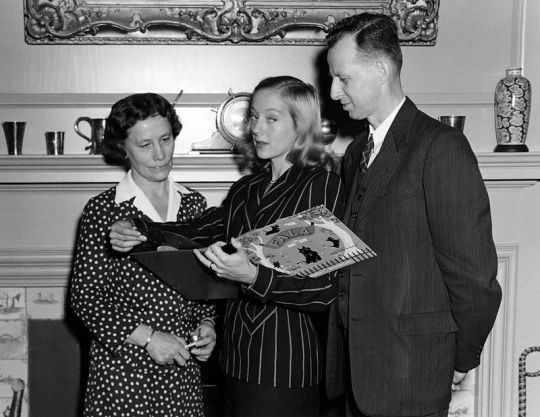
Ms. Suckley (left) in Roosevelt's private office at the presidential library with actress Evelyn Keyes, and Library Director Fred Shipman. Ms. Keyes is holding the album-version of Ms. Suckley's book The True Story of Fala, October 31, 1946. (Photo: FDR Presidential Library & Museum)
There were perks to being Roosevelt’s close friend. The two enjoyed picnics and country drives. Both loved to dish the gossip about Washington politicos and the Hudson River Valley families they had known for decades. Daisy helped President Roosevelt design his Hyde Park retreat, Top Cottage. She enjoyed the “Children’s Hour” afternoon breaks when Roosevelt would mix cocktails for himself and his friends to unwind. There were getaways at Shangri-La, the rustic presidential retreat in Maryland’s Catoctin Mountains known today as Camp David. She attended services at Hyde Park Church with the First Family, King George VI and Queen Elizabeth when the royals visited in 1939. It was she who gave him Fala, the Scottish Terrier to whom he was so attached after receiving the pooch as a Christmas gift in 1941.
President Franklin Delano Roosevelt stood at a podium on the grounds of his family home in Hyde Park and dedicated the Franklin D. Roosevelt Presidential Library on June 30, 1941. He was still in office at the time, having won re-election to an unprecedented third (and eventually fourth) term seven months previously. Roosevelt clearly believed that libraries and archives were themselves exercises in democracy in these years when fascism was spreading around the world. Ever the optimist even as World War Two raged in Europe and the Pacific, Roosevelt declared “It seems to me that the dedication of a library is in itself an act of faith. To bring together the records of the past and to house them in buildings where they will be preserved for the use of men and women in the future, a Nation must believe in three things. It must believe in the past. It must believe in the future. It must, above all, believe in the capacity of its own people so to learn from the past that they can gain in judgment in creating their own future.” Then he quipped to the two thousand gathered about this being their one chance to see the place for free.
Roosevelt had been an unrepentant collector since his earliest boyhood days, with wide-ranging interests especially in naval history, models ships, taxidermy, philately, books on local history, political ephemera, and—probably above all—anything related to the Roosevelt clan itself. His eight-years-and-counting administration had already produced reams of material via the myriad alphabet soup New Deal agencies that had put millions of Americans to work during the Great Depression. It was becoming increasingly obvious in that Summer of 1941 that the United States would likely become entangled in the Second World War; as Roosevelt well understood, that would mean even more documents for the historical record.
Presidential repositories of various incarnations were not entirely new. George Washington had taken his papers with him back to Mount Vernon after his administration for organization. Rutherford B. Hayes, Herbert Hoover, and even Warren G. Harding had versions of them. Nora E. Cordingley (featured in a March 2018 Women of Library History post) was a librarian at Roosevelt House, essentially a de facto presidential library opened in 1923 at Theodore Roosevelt’s birthplace on Manhattan’s East 20th Street whose papers and other materials eventually moved to Harvard University’s Houghton and Widener Libraries. What was new about Franklin Roosevelt’s creation was its codification of what is today’s presidential library system. Roosevelt convened a committee of professional historians for advice and consultation, raised the private funds necessary to build the library and museum, urged Congress to pass the enabling legislation, involved leading archive and library authorities, and ultimately deeded the site to the American people via the National Archives, which itself he had signed into being in 1934.
The academic advisors, archivists, and library professionals at the Franklin D. Roosevelt Library were all important, indeed crucial, to the professionalization and growth of both the Roosevelt site and what would become the National Archives and Records Administration’s Office of Presidential Libraries. However, Roosevelt understood in those early that he also needed someone within his museum and library who knew him deeply and understood the nuances of his life and long career. That is why he turned to Ms. Suckley, securing her a position as junior archivist in September 1941 just months after the opening. The library was very much a working place for the president, who kept an office there, where—unbeknownst to museum-goers on the other side of the wall—he might be going through papers with Daisy, entertaining dignitaries while she looked on, or even making decisions of consequence to the war. Ms. Suckley worked conscientiously, even lovingly, in the presidential library, going through boxes of photographs and identifying individuals, providing dates and place names that only she would know, filling in gaps in the historical record, sorting papers, and serving in ways only an intimate could. The work only expanded after President Roosevelt died and associates like Felix Frankfurter and others donated all or some of their own papers. The work also became more institutionalized and codified. Other Roosevelt aides took on increasingly important roles after the president’s death in 1945. More series of papers became available to scholars in the 1950s and 60s as the Roosevelt Era receded from current events into history. Through it all Daisy Suckley continued on for nearly two more decades until her retirement in 1963.
Margaret “Daisy” Suckley lived for twenty-eight more years after her retirement, turning her attention to the preservation of her ancestral home there on the Hudson but never forgetting Franklin. In those later years when reporters, historians, and the just plain curious curious showed up at Wilderstein and inevitably asked if there was any more to tell about her friendship with Franklin Roosevelt she always gave a wry smile and demure “No, of course there isn’t.” After her death at the age of ninety-nine in June 1991 however a trove of letters and diaries was found in an old suitcase hidden under her bed there at Wilderstein. A leading Roosevelt scholar edited and published a significant portion of the journals and correspondence in 1995 to great public interest. While it is still unclear if there was every any romantic involvement between Franklin and Daisy—as some have speculated for decades—the letters do provide a deeper, more nuanced portrayal of their relationship and show just how close the two were. Franklin Delano Roosevelt may have been The Sphinx to many, hiding his feelings behind a veneer of affability and bonhomie. To his old neighbor, distant cousin, discreet friend, loyal aid, and steadfast curator Margaret Suckley, he showed the truer, more vulnerable side of himself.
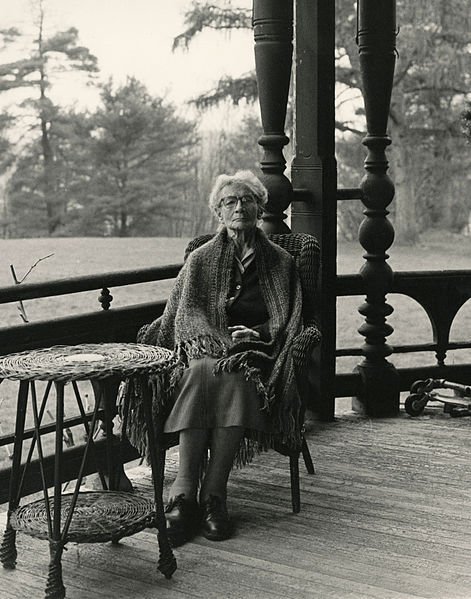
Ms. Suckley later in life at Wilderstein, 1988. (Photo: FDR Presidential Library & Museum)
Further reading:
Hufbauer, Benjamin. “The Roosevelt Presidential Library: A Shift in Commemoration.” American Studies, vol. 42, no. 3, Fall 2001, pp. 173–193.
Koch, Cynthia M. and Lynn A. Bassanese. “Roosevelt and His Library, Parts 1 & 2.” Prologue: Quarterly of the National Archives and Records Administration, vol. 33, no. 2, Summer 2001, Web.
McCoy, Donald R. "The Beginnings of the Franklin D. Roosevelt Library," Prologue: The Journal of the National Archives, vol. 7, no. 3, Fall 1975, pp. 137-150.
Persico, Joseph E. Franklin & Lucy: President Roosevelt, Mrs. Rutherford, and the Other Remarkable Women in His Life. Random House, 2008.
Ward, Geoffrey C. Closest Companion: The Unknown Story of the Intimate Friendship between Franklin Roosevelt and Margaret Suckley. Houghton Mifflin, 1995.
#women's history#library history#tumblarians#daisy suckley#fdr#margaret suckley#archivists#presidential collections#new york history#fdr presidential library#women of library history
13 notes
·
View notes
Text
Upgrading Your on-line Gaming Setup With Netgear Hardware: Is It worth It?
Over the final 12 months, I’ve been looking to drastically improve my on-line gaming setup. It’s no longer that my normal connection speeds were especially slow or my remote interactions rather laggy. Multiplayer suits of Overwatch and Sea of Thieves ran well ample, and most video game downloads chugged alongside at a more than applicable tempo except i used to be on the psnetwork—why the insistent statistics cap, Sony?.

however here’s the thing: For a small while, i used to be buying 250Mbps internet service and not ever even getting near that marketed velocity. Most connection checks petered out at a measly 140Mbps, which isn’t anything else to scoff at, but I wasn’t getting what i used to be procuring. After dealing with that minor frustration, I knocked my plan right down to 150Mbps and, to be fairly sincere, nothing in reality changed. speed checks nevertheless reported a max of round 140Mbps.

bottom line became this: I just knew that my hardware became surprisingly out of date and that definite improvements can be made that might alternate my cyber web experience for the enhanced, so I reached out to Netgear in an try and are trying a few of their extra enjoyable gaming-connected items. They were kind ample to send over three compelling items of hardware, and what follows is my honest event with each and every gadget.
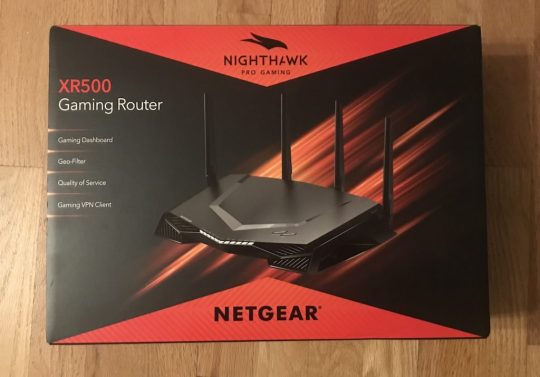
CM1000 ultra-high pace Cable Modem MSRP $169.ninety nine
As i discussed above, I’ve been getting around 140Mbps down load and 6Mbps add on a comparatively out of date Motorola SURFboard DOCSIS 3.0 modem. I feel I’ve been using that equal piece of hardware for around 10 years now, supply or acquire, so I’d say I’m due for an improve. Enter Netgear’s DOCSIS 3.1 beast, and what the field reproduction dubs as delivering the “World’s quickest Cable cyber web” at “up to 6Gbps downstream and 1.8Gbps upstream”. if you’re unique with what DOCSIS three.1 is, here’s an outstanding video describing the technology. In a nutshell, it’s an up to date protocol that allows for fiber-caliber internet speeds over current cable web infrastructure. Granted, your web provider issuer needs to present that form of lightspeed option, after which you certainly deserve to be paying for observed speed.
That talked about, I’m not currently procuring gigabit information superhighway I wish!, so i will be able to’t verify that selected tier of provider on this new modem, unfortunately. however after tinkering round with things, what i will say is that, strictly out of the field, the machine definitely looks to have stronger my network condition vastly. without even touching my historical router, I conveniently swapped out my SURFboard modem with the clean CM1000, had the cable enterprise activate it, and right away administered a wired ethernet velocity test. With simply the modem trade on my own, my clocked velocity went from 140Mbps to round 180Mbps—dazzling damn fantastic. add velocity still hovered surprisingly low, round 6Mbps, though I suppose that’s extra of a controversy with my frequent service area.
The CM1000 allows for some critically speedy cable internet speeds.credit: Netgear
on the grounds that installing, the CM1000 has delivered constant connection and speeds with none deserve to be rebooted, all whereas staying mostly cool to the touch. For journalistic functions, I bumped my carrier tier back up up to 250Mbps just to see how the modem would react, and now I’m getting a whopping 300Mbps ! download. The upload velocity doubled marginally to round 12Mbps, which I’ve study is more than satisfactory for many excessive nice gameplay streaming. I’d say this is all an awful lot proof that Netgear’s hardware will increase whatever thing speeds you’re currently paying for.
So the question turns into here: Does the standard gamer need this cable modem? It pains me to say it, however probably no longer. which you could fully nevertheless get through with more run-of-the-mill hardware, primarily in case you’re most effective purchasing lessen-tier internet speeds. but if you have Xfinity from both Cox or Comcast and wish to supercharge your connection with more moderen gigabit cyber web which you’ll want the blanketed DOCSIS 3.1 to permit, or in case you’re without problems trying to future-proof your getting older home network, I’d wager it’s value the just a little high asking expense. The CM1000 is in reality the caviar of cable modems: A tasty luxury.
XR500 Nighthawk pro Gaming Router MSRP $299.ninety nine
I have to say that my trusty Netgear Nighthawk R7000 has treated me smartly through the years, and honestly, it’s no shabby router via any stretch of the creativeness: A swish design, three adjustable antenna with impressive wifi signal energy and a bunch of normal firmware updates left little or no to complain about. however now that I’ve tried Netgear’s personal Nighthawk seasoned Gaming XR500, it’d be basically problematic to head again, as I suppose like I’ve graduated to the networking massive leagues.
The Nighthawk pro Gaming router has all of the commonplace instant community facets we’ve all come to predict, together with 2.4GHz, 2.5GHz and visitor networks. There’s even a sensible connect function that unifies and intelligently sorts all incoming device connections beneath an single, automated SSID in reality easy, in fact. Don’t overlook Quad circulate and MU-MIMO for sooner all-around connections, and fancy beamforming technology that provides additional-stable wireless indicators. also, there’s 4 antenna as a substitute of my general three, which managed to enhance my wireless connection speeds by using about 20Mbps. Then there’s the further gaming stuff, which is what makes the XR500 in reality stand out.
Netgear’s XR500 is a very strong choice for hardcore gamers.credit: Netgear
first off, the main UI browser dashboard DumaOS allows you to display screen literally everything occurring in your community in real time: ordinary download endeavor, normal add exercise, ping, as well as the bandwidth utilization of every connected device. that you can then go past that to the QoS, or quality of provider, and dictate which gadgets ideally gaming consoles or PCs get to use essentially the most bandwidth at any given time. i will be able to see this coming in handy for large households where on-line gamers should coexist with heavy-usage Netflix and Hulu streamers. that you would be able to moreover utilize the Geo-Filter, which draws up a global map that lets you control the gap of online connections to multiplayer servers with a purpose to curb lag. It’s a very amazing set of features that presents some critically customizable options for dedicated game enthusiasts.
yes, it’s an expensive—and extreme, some would argue—networking accent geared nearly fully towards the hardcore gaming market, however I consider that it hits the bullseye in terms of what that demographic desires. It’s additionally a superb choice for anybody who with ease desires greater authority over their home network. It’s having comprehensive agency over the Handmaid’s tale binge happening within the living room while Fornite and Overwatch rages upstairs, all while somebody is watching outlandish ASMR movies on YouTube in the basement and a kick back-out Spotify mix plays within the backyard. My biggest criticism is that it doesn’t consider like it prices $300; i might have favored a pleasant metal casing as hostile to the low-cost plastic Netgear selected to go along with. perhaps it turned into for overheating causes.
SX10 Nighthawk seasoned Gaming change MSRP $299.ninety nine
Rounding out the trio of premium Netgear hardware is one severely pricey networking swap. searching suspiciously like the spaceship from ‘80s Disney sci-fi traditional Flight of the Navigator, the SX10 in contrast to the XR500 fully seems like an elegant piece of package for your palms. With foremost steel housing, it weighs in at just over three pounds, so we’re talking particular doorstop fabric right here. You recognize, some thing that looks like it might effortlessly outlive the cockroaches. Such solid fabric may come throughout as overkill for whatever as purposeful as a swap, however I appreciate the attention to aspect. Makes it more durable to by accident tug the device off a desk or entertainment center.
blanketed onboard are 2 10GMulti-Gig ethernet ports, eight 1G ethernet ports, a whole bunch of customizable RGB LEDs and a physical button to manually flip the lights on and off. just like the Nighthawk professional Gaming router, the SX10 has an attractive in-depth interface that lets you fully customize your network experience. you’ve got the power to manage each and every of the 10 ports, so the rest wired without delay to the swap is commence for bandwidth allocation. that you could also alternate the hue of any LED gentle to your liking, whatever thing specially positive for determining certain video game consoles or PCs at a glance. keep in mind that one of those 10 ports is reserved for connection to a cable modem or router.
The SX10 has a number of ports and LEDs for total customization.credit score: Netgear
regardless of some salt-of-the-earth reliability, the SX10 is possibly the hardest Netgear contraption to recommend on its own, and never most effective because of the steep fee. It’s without doubt a high quality piece of hardware with quite a lot of alternatives game enthusiasts curious about their wired ethernet have a great deal to be enthusiastic about right here, nevertheless it feels much extra like an augmentation to the XR500 than any kind of standalone product. That’s not to say you couldn’t spend it absolutely independently of the aforementioned router and find a ton of great use. I’m easily seeing the SX10 as an unbeatable partner piece to an already rocking XR500 setup. probably that’s nitpicky aesthetics, however there it’s. besides the fact that children, if you do should extend your wired ethernet alternatives and choose to fork over the money for this swish little manage container, you gained’t be upset, not in the slightest degree.
Netgear provided complimentary evaluation product for insurance purposes.
3 notes
·
View notes
Text
“Tony de Peltrie” (1985)
The basics: Wikipedia
Opened: A landmark piece of computer animation, the Canadian short was part of the 19th Annual Tournee of Animation anthology that showed at the Vogue Theater in March and April of 1986.
Also on the bill: At least one Saturday in April, it was programmed in the 9:00 slot after Chris Marker’s Akira Kurosawa documentary A.K. and Woody Allen’s Sleeper, and before a midnight showing of Night of the Living Dead, which sounds to me like a very good eight-hour day at the movies. Otherwise, you could have had a less perfect day seeing it play after Haskell Wexler’s forgotten Nicaragua war movie Latino and the equally forgotten Gene Hackman/Ann-Margaret romantic drama Twice in a Lifetime.
What did the paper say? ★★★1/2 from the Courier-Journal film critic Dudley Saunders. Saunders described the Tournee as “a specialized event that shows signs of moving into the movie mainstream,” correctly presaging the renaissance in feature-length animation in the 1990s generally and Pixar specifically, whose Luxo, Jr. short was released that same year. Of Tony, Saunders singles it out as “one of the most technologically advanced,” and that it featured “some delightful music from Marie Bastien.” He then throws his hands up: "Computers were used in this Canadian entry. Don’t ask how.” Saunders was long-time film critic for the C-J’s afternoon counterpart, the Louisville Times, throughout the 1960s, ‘70s and ‘80s. In the late 1980s, he would co-found Louisville’s free alternative weekly, the Louisville Eccentric Observer.
What was I doing? I was six and hypothetically could have seen an unrated animation festival, though I'd have been a little bit too young to have fully appreciated it. Although, who knows, I’m sure I was watching four hours of cartoons a day at the time, so maybe my taste was really catholic.
How do I see it in 2018? It’s on YouTube.
youtube
A four-hour-a-day diet of cartoons was probably on the lower end for most of my peers. I grew up during what I believe is commonly known as the Garbage Age of Animation, which you can trace roughly from The Aristocrats in 1970 to The Little Mermaid (or The Simpsons) in 1989. The quantity of animation was high, and the quality was low. Those twenty years were a wasteland for Disney, and even though I have fond memories of a lot of those movies, like The Black Cauldron, they’re a pretty bleak bunch compared to what was sitting in those legendary Disney vaults, waiting patiently to be released on home video.
Other than low-quality Disney releases, the 1980s were highlighted mostly by the post-’70s crap was being churned out of the Hanna-Barbera laboratories. Either that, or nutrition-free Saturday morning toy commercials like The Smurfs and G.I. Joe. Of course there’s also Don Bluth, whose work is kind of brilliant, but whose odd feature-length movies seem very out-of-step with the times. Don Bluth movies seem now like baroque Disney alternatives for weird, dispossessed kids who didn’t yet realize they were weird and dispossessed. (Something like The Secret of NIMH is like Jodorowsky compared to, say, 101 Dalmatians.) Most of the bright spots of those years were produced under the patronage of the saint of 1980s suburbia, Steven Spielberg. An American Tale or Tiny Toon Adventures aren’t regarded today as auteurist masterpieces of animation (or are they?), but they were really smart and imaginative if you were nine years old. Still, the idea that cartoons might be sophisticated enough to be enjoyed by non-stoned adults was probably very alien concept in 1985.
In the midst of all of this, though, scattered throughout the world were a bunch of programmers and animators working out the next regime. Within ten years of Tony de Peltrie, Pixar’s Toy Story would be the first feature-length CGI animated movie, and within another ten years, traditional hand-drawn animation, at least for blockbuster commercial purposes, would be effectively dead. That went for both kids and their parents. Animation, like comic books, would take on a new sophistication and levels of respectability in the coming decades.
I love it when you read an old newspaper review with the benefit of hindsight, and find that the critic has gotten it right in predicting how things may play out in years to come. That’s why I was excited to read in Saunders’ review of the Tournee that he suspected animation as an artform was showing “signs of moving into the movie mainstream.” His sense of confusion (or wonder, or some combination) at the computer-generated aspects is charming in retrospect, too.
Tony de Peltrie is a landmark in computer-generated animation, but its lineage doesn’t really travel through the Pixar line at all (even though John Lassetter himself served on the award panel for the film festival where it was first shown, and predicted it’d be regarded as a landmark piece of animation). The children of the 1970s and ‘80s grew up to revere the golden era of Pixar movies as adults, and the general consensus is that not only are they great technical accomplishments, but works of great emotional resonance.
As much of an outlier as it makes me: I just don’t know. I haven’t really thought so. I think most Pixar movies are really, really sappy in the most obvious way possible. The oldest ones look to me as creaky as all those rotoscoped Ralph Bakshi cartoons of the ‘70s. Which is fine, technology is one thing -- most silent movies look pretty creaky, too -- but the underlying of armature of refined Disney sap that supports the whole structure strains to the point of collapse after a time or two.
Film critic Emily Yoshida said it best on Twitter: she noted, when Incredibles 2 came out, she’d recently re-watched the first Incredibles and was shocked at how crude it looked. "The technoligization of animation will not do individual works favors over time,” she wrote. “The wet hair effect in INCREDIBLES, which I remember everyone being so excited about, felt like holding a first generation iPod. Which is how these movies have trained people to watch them on a visual level...as technology.” There’s something here that I think Yoshida is alluding to about Pixar movies that is very Silicon Valley-ish in the way they’re consumed, almost as status symbols, or as luxury products. This is true nearly across all sectors of the tech industry now, but it’s particularly evident with animation.
One of my favorite movie events of the year is when the Landmark theaters here in Minneapolis play the Oscar-nominated animated shorts at the beginning of the year. Every year, it’s the same: you’ll get a collection of fascinating experiments from all over the world, some digitally rendered, some hand-drawn. They don’t always work, and some of them are really bad, but there’s always such a breadth of styles, emotions and narratives that I’m always engaged and delighted. They remind you that, in animation, you can do anything you want. You can go anywhere, try everything, show anything a person can imagine. Seeing the animated shorts every year, more than anything else, gets me so excited about what movies can be.
And then, in the middle of the program, there’s invariably some big gooey, sentimental mush from Pixar. Not all of them are bad, and some are quite nicely done, but for the most part, it’s cute anthropomorphized animals or objects or kids placed in cute, emotionally manipulative situations. I usually go refill my Diet Coke or take a bathroom break during the Pixar sequence.
Yeah, yeah, I know. What kind of monster hates Pixar?
I don’t hate Pixar, and I like most of the pre-Cars 2 features just fine. The best parts of Toy Story and Up and Wall-E are as good as people say they are. But when you take the reputation that Pixar has had for innovation and developing exciting new filmmaking technology in the past 25 years, and compare it to the reality, there’s an enormous gap. And it drives me nuts, because if this is supposed to be the best American animation has to offer in terms of innovation and emotional engagement, it's not very inspiring. Especially placed alongside the sorts of animated shorts that come out of independent studios elsewhere in the U.S., or Japan, or France, or Canada.
Which brings us to Tony de Peltrie, created in Montreal by four French-Canadian animators, and supported in part by the National Film Board of Canada, who would continue to nurture and support animation projects in Canada through the twenty-first century. A huge part of the enjoyment -- and for me, there was an enormous amount of enjoyment in watching Tony de Peltrie -- is seeing this entirely new way of telling stories and conveying images appear in front of you for the first time. Maybe it’s because I have clear memories of a world without contemporary CGI, but I still find this enormous sense of wonder in what’s happening as Tony is onscreen. I still remember very clearly seeing the early landmarks of computer-aided graphics, and being almost overwhelmed with a sense of awe -- Tron, Star Trek IV, Jurassic Park. Tony feels a bit like that, even after so many superior technical accomplishments that followed.
Tony de Peltrie doesn’t have much of a plot. A washed-up French-Canadian entertainer recounts his past glories as he sits at the piano and plays, and then slowly dissolves over a few minutes into an amorphous, impressionistic void. (Part of the joke, I think, is using such cutting-edge technology to tell the story of a white leather shoe-clad artist whose work has become very unfashionable by the 1980s.) It’s really just a monologue. The content could be conveyed using a live actor, or traditional hand-drawn animation.
But Tony looks so odd, just sitting on the edge of the Uncanny Valley, dangling those white leather shoes into the void. Part of the appeal is that, while Tony’s monologue is so human and delivered in such an off-the-cuff way, you’re appreciating the challenge of having the technology match the humanity. Tony’s chin and eyes and fingers are exaggerated, like a caricature, but there’s such a sense of warmth underneath the chilliness of the computer-rendered surfaces. Though it’s wistful and charming, you wouldn’t necessarily call it a landmark in storytelling -- again, it’s just a monologue, and not an unfamiliar one -- but it is a technological landmark in showing that the computer animation could be used to humane ends. It’d be just as easy to make Tony fly through space or kill robots or whatever else. But instead, you get an old, well-worn story that slowly eases out of the ordinary into the surreal, and happens so gradually you lose yourself in a sort of trance.
As Yoshida wrote, technoligization of animation doesn’t do individual works favors over time. To that end, something like Tony can’t be de-coupled from its impressive but outdated graphics. These landmarks tend to be more admired than watched -- to the extent that it’s remembered at all, it’s as a piece of technology, and not as a piece of craft or storytelling.
Still, Tony is the ancestor of every badly rendered straight-to-Netflix animated talking-animals feature cluttering up your queue, but he’s also the ancestor of any experiment that tries to apply computer-generated imagery to ways of storytelling. In that sense, he has as much in common with Emily in World of Tomorrow as he does with Boss Baby, a common ancestor to any computer-generated human-like figure with a story. When Tony dissolves into silver fragments at the end of the short, it’s as if those pieces flew out into the world, through the copper wires that connect the world’s animation studios and personal computers, and are now present everywhere. He’s like a ghost that haunts the present. I feel that watching it now, and I imagine audiences sitting at the Vogue in 1986 might have felt a stirring of something similar.

2 notes
·
View notes
Photo

"The next time someone asks stuff from me, I won't give them anymore because they'll scam me lang"
Games have been highly prevalent forms of entertainment for children nowadays. In fact, statistics show that children between the age of 8 to 12 years old play games for an average of 2 hours daily. This means that children of the same age group can play up to 15 hours per week. However, despite this fact, not all games have a child safety feature. This very much includes Roblox. Moreover, the average age of a Roblox player is estimated to be 8 to 18 years old. This leaves children below the age of 12 vulnerable to online theft, bullying and even being exposed to violence.
In an interview from Evo Nicolasora, an 8 year old Roblox player, he stated that when he was playing the game, a certain player kept on asking him to play with him. Being aware of strangers, Evo did not play with the player at first. But because of his persistence, Evo eventually played with the player. They played multiple games together, therefore making Evo develop a degree of trust with the player. However, at a certain point, while playing the game, the player asked if he could borrow his rare pet; a golden dragon. Evo gladly lent his pet to the player with the belief that it would be returned to him. But to his disappointment, this was not the case. As soon as the player got his rare pet, he immediately left the game's server and blocked Evo's account. Evo, at the young age of 8, got scammed. This caused tremendous fear in Evo because he knows for a fact that his parents spent a significant amount of money to buy the items that he had. It also made him very angry and disappointed both at himself and at the player who scammed him. When his parents eventually found out, he was scolded, and as a response, he cried. However, with the comfort of his parents, Evo is now okay. Lastly, Evo further stated that he would no longer lend any player his things due to the risk of being scammed once again.
Being born in a generation wherein everything seems to be connected that it is apart, it is very apparent that the world is suddenly becoming smaller and smaller through the creation of the internet and other technologies that optimizes its use which includes social media and of course online games. However, as the internet bridges gaps in the world, it also poses a threat to those who are vulnerable to its misuse and this includes children.
As society advances, children become more and more immersed with technology especially the internet wherein it is utilized in a plethora of ways which includes education in the form of videos and other applications and of course entertainment which includes games and other entertainment platforms. In this sense, the internet is a double edged sword that gives as much benefits as it gives harm. As children interact with the internet through their media for playing online games or watching videos, they are exposed to an entire world that lacks safety nets that would ensure that children would only interact with content that is appropriate with their age. Because of this, children are prematurely exposed and immersed in content that should have been filtered which includes violent games that introduce the concept of gore, killing and death. This is very evident in online games nowadays wherein killing, is the entire goal of the game. In my case, Dota and Counter Strike were among the most popular games back when I was a kid. These games clearly showed gore, killing and death which may lead children to perceive that these actions are okay in society. In this case, games clearly affect the development of children psychologically. However, nowadays, kids are exposed to an even wider selection of games which also leads to more risks including scamming.
Since the internet was invented, games slowly transitioned from LAN games to online which allows more interaction with other people which includes live chatting, trading items, PVP fighting and a variety of other features. There is no minimum age to play certain games and if there are, a child could easily overcome that challenge by manipulating the creation of their account, specifically their birth year. With this, this means that an 8 year old child could be interacting with teenagers or even young adults who are many times older which makes them susceptible to exploitation, bullying and even scamming. In online MMORPG games such as Roblox, the core of the game is live virtual interactions with other players of varying ages. One would never really know the age of the players playing the game which should not be the case because by granting children open interactions with people of varying ages, they are able to learn things that they should not have which includes curse words. Moreover, children are vulnerable to experience things that may cause harm in their psychological development such as in the case of Evo when he got scammed. An eight year old child experiencing scams, even on online platforms such as Roblox may lead the child to develop trust issues in the future. Moreover, that child may develop the notion that scamming is a part of life since a lot of people do it. In this case, the child’s values and perceptions of the world are affected which may lead to worse consequences when they grow up.
On that note, I believe it is important for online platforms, especially those that children use, should develop better safety measures in order to ensure that children can safely interact online in order to prevent situations that may be traumatizing for a young child which may then lead to issues on psychological development. Lastly, I highly recommend that parents should supervise and limit their children’s interaction with the internet, including games such as Roblox, in order to reduce the possible degree of harm that it may cause on the child both psychologically and emotionally.
0 notes
Text
The Ministry of Common Sense Strives to Bring Empathy Back
“Companies are so entangled in their own internally generated issues, and further beset by reams of invisible red tape inside employees’ heads, that they lose sight of their core purpose — and inevitably pay the price.” — Martin Lindstrom, The Ministry of Common Sense
Common Sense Has Left The Building
Martin Lindstrom was having dinner with his publishing team. He’d spent the day preparing a list of book ideas that, frankly, fell flat. That’s when one team member asked him what was closest to his passion. And his answer was “common sense” — or the lack of common sense that he faced with companies that made buying and using their products a hellish customer experience.
In his latest book, The Ministry of Common Sense: How to Eliminate Bureaucratic Red Tape, Bad Excuses, and Corporate BS, Lindstrom shares dozens of these examples along with a process to overcome this corporate insanity.
Lindstrom Gets to What’s Underneath a Great Brand
For decades, Martin Lindstrom has been helping brands like Microsoft, Pepsi and Lego create memorable brands. He’s written eight books that shared his research and insights about why we buy, how to harness data, the unique way our senses influence our buying decisions, and even the tricks advertisers use to influence our buying decisions.
By any measure, he’s had a successful career. But after some self-reflection, he realized that, while his work was transformative and important, it felt like a hit-and-run. He didn’t like the idea that he would show up, provide ideas and strategies, and leave it up to the company to implement.
Over the last few years, he’s committed himself toward transforming businesses and cultures from the inside out. And it’s from this perspective that The Ministry of Common Sense gets its juice.
Who is the Audience for The Ministry of Common Sense?
One of the first questions I ask myself is “who is this book written for?” The Ministry of Common Sense made that a bit of a challenge to answer.
The most obvious audience for this book is the C-level executive in a large global company. The idea is that he reads this book, reflects on his organization, and wonders if his company was one of these “Corporate Darwin Awards” examples. Because you certainly don’t want to be “That Guy”.
Small business owners would also benefit from reading this book. Sure, your business isn’t as big as these examples, but it’s a cautionary tale for those entrepreneurs who are scaling their business. If that’s you, you’ll find a virtual playbook for what NOT to do.
Finally, I think the other person this book was written for was — Martin Lindstrom. It took me about two rounds of reading and rereading to see that.
In the introduction, Marshall Goldsmith called the book “funny, entertaining and informative”. This threw me for a loop because it seemed a bit different from Lindstrom’s previous books. Then I read what inspired the book in the acknowledgments (which are at the end in my review copy). That’s when I made the connection.
I think this book was therapeutic for him. It’s like he just couldn’t deal with the “crazy” anymore and simply had to tell it like it is.
The Ministry of Common Sense was like the unvarnished truth about the day in the life of a global branding expert. As a marketer myself, I didn’t know if I was supposed to envy him or feel sorry for him.
Empathy is at the Core of The Ministry of Common Sense
Let’s get to the nitty-gritty of this book. As I said before, it’s a little different from your typical Martin Lindstrom book. There isn’t a lot of research or data in this one. The stories and “case studies” are basically a plethora of experiences from his life as a consultant over the years.
If the key question is “What happened to common sense?” Then the answer is “Putting rules, technology and legal compliance before empathy.”
You wouldn’t know it by the chapter names, but each chapter is a drill-down of how internal politics, technology, compliance, and policies that keep large companies “organized” ultimately get in the way of common sense.
I think that the model he presents, with empathy at the core, could have used some type of graphic so that the reader can understand how all of these elements connect and impact one another.
How to Bring Common Sense Back
The tension in the book revolves around the question of “How am I supposed to fix this?!” This doesn’t get answered until the end. The final chapter of the book provides some guidance as to how you might put common sense at the center of your business and how to go about changing some policies in the form of commonly asked questions and Lindstrom’s answers.
Here are a couple of recommendations I gleaned from the book that I think will be most helpful for small to mid-sized businesses:
Shop your own business. Think of a way to give yourself the exact same experience that your customers have. Define a task, call in, use the website, etc. If you run a face-to-face business such as a restaurant or retail, get a secret shopper (it’s more affordable than you’d think).
Get into your customer’s world. This might include simply asking your customers, visit your customers. Explore what they are really thinking about when they use your product or service.
Ask your employees and then LISTEN. Vow to make small changes based on their feedback.
Are We In a Common Sense Revolution?
The Ministry of Common Sense isn’t the first book I’ve reviewed on this topic. Would You Do That to Your Mother (2018) is another book that pokes the corporate bear in the hopes of inciting a common sense revolution.
However, I think that it will take more than a book or two to do that. Perhaps a global pandemic might do the trick.
Remarkably, Lindstrom has incorporated the COVID-19 disruption in this book. In fact, there are several non-common-sensical examples of how companies are trying to do the right thing with unintended consequences.
But that’s beside the point.
Disruptions tend to lay bare inconsistencies, gaps and all the different ways that we make life unnecessarily difficult for customers.
And for this reason, I wonder if The Ministry of Common Sense might nudge more companies toward embracing empathy as a core value and simplifying our lives. If they aren’t sure where to start, they should ask Martin Lindstrom. I’m sure he’d be happy to help.
Image: amazon.com
This article, “The Ministry of Common Sense Strives to Bring Empathy Back” was first published on Small Business Trends
https://smallbiztrends.com/
The post The Ministry of Common Sense Strives to Bring Empathy Back appeared first on Unix Commerce.
from WordPress https://ift.tt/36v5Rpv via IFTTT
0 notes
Link
Today is Black Women's Equal Pay Day. This day shines a light on the long-neglected fact that the gender pay gap hits women of color the hardest. Black women are 37 cents behind men in the pay gap—in other words, for every dollar a man makes, black women make 63 cents.
I’d like to acknowledge the many realities black women face every day. To recognize that women of color have to work—on average—eight months longer to earn the same as their male counterparts do in one year. To bring attention to the fact that black women earn 17% less than their white female counterparts and that black women are paid 63% of the dollar men are paid. Even black women who have earned graduate degrees get paid less at every level. This is as true in inner cities as it is in Silicon Valley.
Together, we will change the story—but we are going to have to fight for every penny.
Growing up, I was told I couldn’t accomplish my dreams because I was a woman and, more so, because of the color of my skin. In every stage of my life, I’ve had to learn to stand up for myself and speak out. I have been treated unfairly, I’ve been disrespected by my male colleagues and—in the most painful times—I’ve been the subject of racist remarks on and off the tennis court. Luckily, I am blessed with an inner drive and a support system of family and friends that encourage me to move forward. But these injustices still hurt.
I am in the rare position to be financially successful beyond my imagination. I had talent, I worked like crazy and I was lucky enough to break through. But today isn’t about me. It’s about the other 24 million black women in America. If I never picked up a tennis racket, I would be one of them; that is never lost on me.
The cycles of poverty, discrimination, and sexism are much, much harder to break than the record for Grand Slam titles. For every black woman that rises through the ranks to a position of power, there are too many others who are still struggling. Most black women across our country do not have the same support that I did, and so they often don’t speak out about what is just, fair and appropriate in the workplace. When they do, they are often punished for it.
Unfair pay has prevailed for far too long with no consequence. Through decades of systematic oppression, black women have been conditioned to think they are less than. In many cases, these women are the heads of households. Single mothers. The issue isn’t just that black women hold lower-paying jobs. They earn less even in fields of technology, finance, entertainment, law, and medicine.
Changing the status quo will take dedicated action, legislation, employer recognition, and courage for employees to demand more. In short, it’s going to take all of us. Men, women, of all colors, races and creeds to realize this is an injustice. And an injustice to one is an injustice to all.
The first step in making a change is recognition. We need to push this issue to the front of conversations so that employers across the U.S. can truly understand that all male and female employees must be compensated equally. Not close. Not almost the same. Equally.
Recently, I have joined SurveyMonkey’s board of directors, with this specific initiative in mind. SurveyMonkey wants to make information accessible so that all of us can make informed decisions. As they say: knowledge is power. As a black female entrepreneur and person in the spotlight, I am trying to figure out how I can move the needle forward and open doors for everyone, no matter the color of their skin. But I want to start with the wage gap.
In celebration of Equal Pay Day for Black Women, I partnered with SurveyMonkey to find out Americans’ opinions on the pay gap. The response was powerful. Here are the key findings:
Sixty-nine percent of black women perceive a pay gap, while just 44% of white men recognize the issue.
Nearly two-thirds of black women say that major obstacles remain for women in the workplace.
In addition to gender, black women see obstacles to racial equality: three-quarters of black women workers say there are still significant hurdles holding back minorities.
Still, some black women remain optimistic: more than 43% of black millennial women believe men and women have equal opportunities for promotion.
While a majority of those surveyed believe that the pay gap is real for both women and minorities, not everyone understands that black workers—specifically women—see more obstacles to racial equality and barriers in the workplace. Data doesn’t lie. It just gives a number to the gap women feel every day. It is my hope that I can give a voice to those who aren’t heard in Silicon Valley, and the workforce as a whole.
I want to bring my perspective and experiences as an athlete, an entrepreneur and a black woman to the boardroom and help create a more inclusive environment in this white, male-dominated industry. And I want every woman of color to do the same. Every step forward you take is two steps of progress for womankind. Let today serve as a reminder that we have a voice. We deserve equal pay for our mothers, our wives, our daughters, our nieces, friends, and colleagues—but mostly, for ourselves.
Black women: Be fearless. Speak out for equal pay. Every time you do, you’re making it a little easier for a woman behind you. Most of all, know that you’re worth it. It can take a long time to realize that. It took me a long time to realize it. But we are all worth it. I’ve long said, “You have to believe in yourself when no one else does.”
Let’s get back those 37 cents.
#serena williams#black women in sports#black women in tennis#tenniswoman#black women's equal pay day#equality#fortune#let's get back those 37 cents#link
468 notes
·
View notes
Text
COP NATION

“Bad boys, bad boys, watcha gonna do…”
As I’ve watched our country being torn apart these last three weeks, I’ve been tempted to voice an opinion, but I thought I would let things simmer and roil a while before setting my thoughts to words – see how events evolved. What has become obvious is that what we have are two separate issues, albeit both intrinsically woven together, joined at the waist: Racism, and what America calls “law and order”; specifically, those who are tasked to uphold this social contract, the police. Those sworn to protect and serve.
Well, like America’s fixation with guns, I have also written about race many times – so many times that I’ve given up writing about either years ago; there is simply nothing more to be said, nor has anything significantly changed. So instead, I’m going to put out there some observations and insights about law enforcement here in America. I draw upon mainly two sources: Last Monday’s (June 8) John Oliver show, and a recent post in the social platform, Medium: Confessions of a Former Bastard Cop.
A quick addendum about the Medium piece: some may question it’s validity and alleged source, as is wise today – there is a huge, digital quagmire of untruths and bullshit floating around the mass communications world, where anyone is free to write anything and instantly put it out there. I myself am a stickler for checking sources and facts before voicing an opinion. That being said, I choose not to waste time digging and poking around on this one for the simple reason that it’s irrelevant; in my 64 years I’ve seen it all happen – a lot. From the war protests and race riots of the 60’s, to the beating and drowning of Joe Campos Torres by the Houston police my first year down here (‘77), to the fatal shooting of Dennis Tuttle and Rhogena Nicholas during a “no knock” botched drug raid January 18th of last year - yes, just like the one that lead to the death of EMT worker, Breonna Taylor, of Kentucky, who was shot eight times, in her home, just last March 13.
Also, a lot of the material touched on in this ex-cop confession is mirrored in the Oliver show. For instance, you might ask yourself, “Is there really such a thing as a ‘killologist’ who regularly trains our police force?”
Why yes little Sarah, there is indeed, and you can see him on the Oliver show!
I encourage you to read the post in Medium (it’s lengthy, but if anything, at least read the closing suggestions) and watch the Oliver show, and then ask yourself: Why does America far and away lead the civilized world in police use of firearms, death by firearms, and imprisonment of its citizens? What are we, as a society, doing wrong or differently?
How did a simple case of an Atlanta black man, Rayshard Brooks, inebriated and asleep at a Wendy’s drive thru, result in his shooting death just days ago? By the way officer Rolfe, bravo sir, bravo! Job well done �� so how does it feel to take a human life, shooting him twice in the back for the offense of being drunk and resisting arrest? Hey, here’s a crazy thought, a wild reimagining: Considering America is now a tinderbox just waiting for a spark over policing methods, how do you think this would have played out if you and your partner, after finding Mr. Brooks too inebriated to drive, said “You know anyone you could call to take you home? You can park your car right over there, come pick it up in the morning…”
The days of dismissing these incidents as “a few bad apples” are long gone; thanks to today’s technology, everyday citizens (not to mention the ubiquitous security cameras that are everywhere) now have the power to record with a handheld phone; anywhere, anytime, and it has become increasingly obvious that no, the problem runs deeper - right to the core of police culture and training. A culture that recently got Tulsa Police Department Maj. Travis Yates in hot water when during a recent podcast he said that systemic racism “just doesn’t exist”, and further suggested research shows the police are shooting African Americans “24% less than we probably ought to be.”
Uhhhh - wow…
Maybe it’s time to look at this nationwide problem from a totally different perspective; maybe we continue to put Band-Aids and cosmetic patches on something that needs to be addressed before the bleeding even starts. The cause, and not the symptoms.
Yet, once again we assuredly will see some tepid policy changes, banning chokeholds, mandated race relations seminars, increased accountability and monitoring, policy reviews, blah, blah, blah – as we’ve seen it all before, for decades (Hey, remember Rodney King?), and in the end nothing changes. If these methods were effective, why are these incidents only increasing in frequency? I join the many who have seen enough; who feel America needs to erase the board and start this equation over, or this bloody ugliness will continue, and only get worse. For an expansion on this, read an excellent recent editorial written by Mariame Kaba, featured in the NY Times.
Unfortunately, the Dems have come up with a reasonable start, but decided to call the initiative “Defunding the Police”. Really? That’s the best you can do? Something that anyone could easily interpret as “let’s starve the cops financially!” Until what – they die on the vine?
No. But let’s take a look at what this financial restructuring really means, and start with the fact that the police force militia (which it has now become) is amply funded. This is because every politician, be they a Democrat or Republican, loves running on a “law and order” platform – it’s an easy grab line. Who doesn’t support law and order in our society? And if it means the police want something from a military garage sale, like a Humvee, an assault vehicle, military grade ordinance and all kinds of fun urban warfare toys? No problem!
Jeez, why does America accept this as necessary? Because our culture, out TV shows, our movies, are saturated with the fairytale myth of “they’re out there everywhere, the ‘bad guys’, and the only thing protecting the sheep from the wolves are the police!” We glorify and promote the idea of our security and protection depends on a steely-eyed squad who are not afraid to use a gun; from the days of the old west, to organized crime during prohibition, to Nixon in 1971 making drug abuse “public enemy #1”, declaring war on the scourge of violent drug dealers that overtook our streets and enslaved our children!
Which, I might add, has proven a laughable failure by any and all standards, and has cost the U.S. over a TRILLION dollars since 1971, while glutting our jails to overflowing with non-violent offenders and ruining countless families.
Watch a cop show (or movie) and see how long it takes before the guns come out to finalize justice, to provide closure and a happy ending. Justice ends with the scum bleeding out on the sidewalk. “COPS”!? Are you fucking kidding me? I didn’t even know it was still on the air – 31 years… Oh, we feel so safe and secure in our homes as we watch the shirtless rabble led off in handcuffs to the squad car!
Who watches a show filled with actual arrests for entertainment?
Meanwhile, let’s leave fantasy land and take a look at the real world: Did you know the vast majority of police action is what they call “reactive”? Meaning responding to noise complaints, issuing parking and traffic citations, dealing with the homeless, domestic disputes, and other noncriminal, societal issues. Most cops make one felony arrest a year – one. And here lies the nut of the problem: armed police being called out mostly to deal with issues such as these.
Things that should, and could, be handled by trained professionals in these fields, not some cop who got 1,000 hours of training at the academy, little of it having to do with these issues. And I say this in defense of the police, and this is what “defunding” really means. They shouldn’t have to deal with these problems, and most are ill equipped to do so – they’re cops! If all you have is a hammer (club and gun), and you were trained to be a carpenter, everything gets treated like a nail. This is ridiculous that our police are expected to wear so many hats and are so over extended. Free them up to deal with actual criminal issues. If one of the other scenarios turns violent or threatening, then call the police.
Why does America find this concept so alien – so non-applicable here in the USA? What, are our citizens somehow different than in the rest of the world?
Bottom line, these are problems that exist because of the anemic funding in areas such as education, housing, and our shameful, for profit healthcare system that leaves millions uninsured and one medical emergency away from bankruptcy. The positively obscene gap of income inequality that grows ever larger. The false promises of politicians. America is increasingly angry and frustrated with a government that is structured to favor the rich. So yes, let’s try diverting some of police funding and instead put it into social programs involved with education, housing, mental health, etc. These areas and the lack of funding are the seed, and then the root of most of society’s ills today – and yes, that often grow into crime and violence. Often these are people that we’ve let fall thru the cracks, who didn’t get the same chance, the same opportunities; and who need a little help.
Pay the police a better wage, attract and demand a more educated and diverse pool of applicants, and free them up to do what they are ideally supposed to do – PROTECT AND SERVE THE COMMUNITY. They shouldn’t be seen as our enemy, nor should we be theirs.
“You have to dominate, if you don’t dominate you’re wasting your time – you’re going to look like a bunch of jerks…You have to put them in jail for ten years and you’ll never see this stuff again.”
- Trump addressing governors during a video conference call, June 1
0 notes
Photo

Ligue 1: Monaco's Robert Moreno in at the deep end with back-to-back league games against league leaders Paris Saint-Germain [ad_1] Paris: Robert Moreno is straight into the deep end in his first managerial role at club level, with Monaco facing back-to-back league games against dominant Paris Saint-Germain. Monaco travels to Paris on Sunday 12 January before facing the defending champion three days later in a rearranged fixture. Monaco, which is owned by Russian billionaire Dmitry Rybolovlev, is in seventh place after recovering from a difficult start. Monaco is Roberto Moreno's first job at club level. @AS_Monaco_EN Moreno will be tasked with trying to close the five-point gap on third place — which secures a berth in the Champions League qualifying rounds — although the 10-point gap to Marseille in second spot and automatic qualification remains a long shot. Moreno, who had a brief spell in charge of Spain during the qualifiers for next year's European Championship, is not concerned about his inexperience at managerial level. “I don’t think it will change much for me,“ the 42-year-old Spaniard said. “Over the past nine years I was an assistant, I took part in all the decision-making in a team playing at the top level, the only difference being that the visible face was someone else.“ Besides, Monaco's insistence made him feel valued. “I received a lot of offers after I left the national team. The project presented to me by Monaco was the best, offered me the most guarantees,“ he said. “I felt like I was their first option, that’s what motivated me.“ He's getting a crash-course introduction to the French league against free-scoring PSG. The defending champion is seven points clear of Marseille, with a game in hand. Coach Thomas Tuchel is starting games with four forwards: Kylian Mbappé, Neymar, Angel Di Maria and Mauro Icardi. This is an even more frightening prospect considering Monaco's shaky defense is among the weakest, with 26 goals conceded in 18 games. Poor defending was a significant problem last season, too. Center half Kamil Glik's lack of pace has regularly been exposed, and Brazilian Jemerson remains inconsistent. Moreno may look to bolster his defense during January's transfer window. His immediate task in midfield will be galvanizing former Spain and Barcelona midfielder Cesc Fabregas. The 32-year-old Fabregas was a big signing when he joined last January, but his form has been mediocre. Monaco looks strong in attack, though, with the prolific Wissam Ben Yedder topping the scoring charts with 13 goals and Islam Slimani leading the league with eight assists along with Di Maria. They have been well supported by attacking midfielder Aleksandr Golovin — one of Russia's best players at the 2018 World Cup — who has three goals and three assists. The only other midfielder to have scored is Gelson Martins, also with three, so that is an area where Moreno may also strengthen. Moreno's background Little is known to the wider soccer public about Moreno, who has mostly worked behind the scenes. A former Barcelona club scout, he was a long-serving assistant to Luis Enrique at Roma, Celta Vigo and Barcelona, one reputed for his pioneering video analysis and expert understanding of the 4-4-2 system. Moreno coached Spain for six games, with four wins and two draws helping the team qualify for Euro 2020. He was promoted from assistant coach when Enrique left to be with his ill nine-year-old daughter, who died last August from bone cancer. But after Enrique was re-hired to lead Spain at Euro 2020, he excluded Moreno from his coaching staff, accusing Moreno of being “disloyal“ for not wanting him to regain the job until after the competition. “I don’t want anybody with these characteristics in my staff,“ Enrique said. “Being overambitious is not a virtue, it’s a flaw.” Still, Enrique credited the work Moreno had done and Moreno was reportedly well appreciated by Spain's players during his brief stint. Asked about his relationship with Enrique, Moreno said recently: “I spent nine exceptional years by his side. For me, what happened is in the past.“ Jardim's legacy Jardim leaves Monaco with a mixed legacy. Although he was sacked twice in little more than one year, the club still owes him a lot. Jardim shaped young talents like Bernardo Silva, Mbappé and Benjamin Mendy, turning an inexperienced squad into one of the most entertaining teams in Europe in a successful 2016-17 season which produced over 150 goals. Monaco beat PSG by eight points to win the French title, and played dazzling attacking football in reaching the Champions League semifinals. Jardim's plans the following season were hampered when the club sold Silva and Mendy to Manchester City, Mbappé to PSG and Tiémoué Bakayoko to Chelsea in a vast summer offload generating more than 300 million euros ($336 million). He tried to rebuild but could not replicate the spark in a weakened side. Then, early into last season, he was sacked to make way as former France great Thierry Henry was thrust — ill prepared — into his first managerial role. It backfired and, embarrassingly for the club, Jardim was re-hired to replace Henry and save Monaco from relegation. He managed that, but another poor start this season sealed his fate despite heading into the winter break with a 5-1 home win. Find latest and upcoming tech gadgets online on Tech2 Gadgets. Get technology news, gadgets reviews & ratings. Popular gadgets including laptop, tablet and mobile specifications, features, prices, comparison. !function(f,b,e,v,n,t,s) if(f.fbq)return;n=f.fbq=function() n.callMethod? n.callMethod.apply(n,arguments):n.queue.push(arguments) ; if(!f._fbq)f._fbq=n;n.push=n;n.loaded=!0;n.version='2.0'; n.queue=[];t=b.createElement(e);t.async=!0; t.src=v;s=b.getElementsByTagName(e)[0]; s.parentNode.insertBefore(t,s)(window,document,'script', 'https://connect.facebook.net/en_US/fbevents.js'); fbq('init', '259288058299626'); fbq('track', 'PageView'); (function(d, s, id) var js, fjs = d.getElementsByTagName(s)[0]; if (d.getElementById(id)) return; js = d.createElement(s); js.id = id; js.src = "https://connect.facebook.net/en_GB/all.js#xfbml=1&version=v2.9&appId=1117108234997285"; fjs.parentNode.insertBefore(js, fjs); (document, 'script', 'facebook-jssdk')); window.fbAsyncInit = function () FB.init(appId: '1117108234997285', version: 2.4, xfbml: true); // *** here is my code *** if (typeof facebookInit == 'function') facebookInit(); ; (function () var e = document.createElement('script'); e.src = document.location.protocol + '//connect.facebook.net/en_US/all.js'; e.async = true; document.getElementById('fb-root').appendChild(e); ()); function facebookInit() console.log('Found FB: Loading comments.'); FB.XFBML.parse(); https://espnsoccer.co/?feed_id=54251 https%3A%2F%2Fespnsoccer.co%2Fligue-1-monacos-robert-moreno-in-at-the-deep-end-with-back-to-back-league-games-against-league-leaders-paris-saint-germain%2F
0 notes
Text
Episode 24: Victory for Whose Sake?

Summer 797/488. The season wraps up on the Alliance side with the failure of the coup d’etat, as Yang attacks them in two ways: one, with bad PR, broadcasting a “confession” by Baghdash that the coup was actually instigated by Reinhard; and two, with what I can only assume is totally accurate and brilliant physics, flinging gigantic chunks of ice at near lightspeed into the Artemis Necklace that surrounded Heinessen and completely destroying it. After Reinhard’s agent, Admiral Lynch, reveals to the rest of the military council that Yang’s propaganda was accurate, they kill him to eliminate evidence of the Empire’s involvement, but not before he shoots and kills Admiral Greenhill. In happier news, Merkatz (and Schneider) show up at Iserlohn and Yang decides to trust them and offer them sanctuary, demoting Schenkopp to having only the second best eyebrows in the Alliance. Sorry Schenkopp!
Frederica
The emotional core of this episode centers around Frederica, who receives the news that her father committed suicide after the defeat of the coup.

Okay actually Lynch shot him, but close enough.
Back when Frederica first found out that her father was involved in leading the coup, I pointed out that her main visible concern is whether Yang would fire her because of it; beyond seeing her anxiety over possibly losing her position and her relief when Yang in fact keeps her on, we’re not given any real view of her emotions about her father’s actions, other than initial shock. Throughout the battle against the 11th fleet she performs her duties as Yang’s adjutant without any apparent distress.

From episode 21, 8:53...

...and 12:14. Sorry animators, I'm calling you out. It's like a spot-the-difference puzzle. Can you spot it? ˙ʇɐɥ s,ƃuɐ⅄ :ɹǝʍsu∀
Now that the fleet battle is over and they’re heading to Heinessen to fight against her father’s military council directly, however, cracks are showing in Frederica’s emotional armor; she spends the first half of the episode sitting in the background of every scene looking completely miserable.




Although we get a peek at her melancholy mood in these shots, she never (that we see) articulates any objection to their plan of fighting to bring down her father’s council, or indeed vocalizes her emotions or opinions on the matter at all (more on this in a sec). While the personal situation is obviously difficult, there’s no indication that her ties to her father outweigh either her loyalty to Yang or her own political opposition to the coup (we don’t know what the main factors really are, because—again—she never tells us). Her suffering here is silent and entirely in the background.
But after they successfully destroy the Artemis Necklace that was theoretically protecting Heinessen, Yang’s fleet is contacted by some other admiral from the council, who delivers the news that Admiral Greenhill committed suicide. This is a lie (although it’s hinted he may have been considering it), but let’s take a moment to parse what this news means to Frederica: Although Yang used a combination of propaganda and unmanned ice chunks destroying unmanned satellites in order to strip away that power of the military council rather than attacking them by force, the result of his actions (as far as she knows) was to shame her father so utterly that he took his own life. And she herself had a role in carrying out this plan; at the very least she never openly opposed it.
So how does Frederica take her father’s death? After showing her immediate horrified reaction, eyes wide and trembling, the camera gives her a bit of privacy; we zoom in on Yang lecturing about despotism and free speech to the military council guy for a few minutes, and when we finally pan out again Schenkopp has come to replace Frederica at Yang’s side.
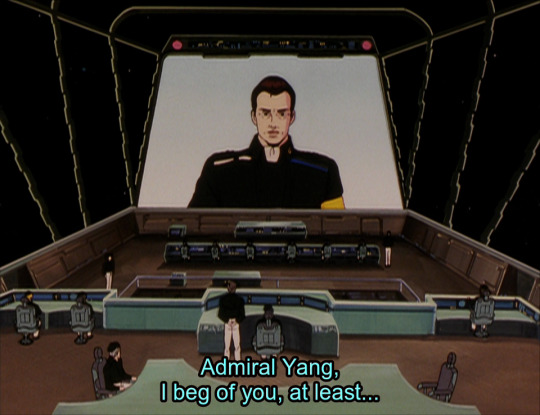
I love the subtlety of this camerawork, and the tiny worldbuilding detail of Schenkopp moving in to fill the vacancy. I suppose the commander is never supposed to be without an attending officer?
Frederica has braced herself against a desk off to the side to try to steady herself, and when Yang goes over to her, she asks him for two hours off to compose herself. Yes that’s right, two hours to get her emotions under control after the actions of her own fleet caused her father to commit suicide in shame after violently overthrowing a democratic government.
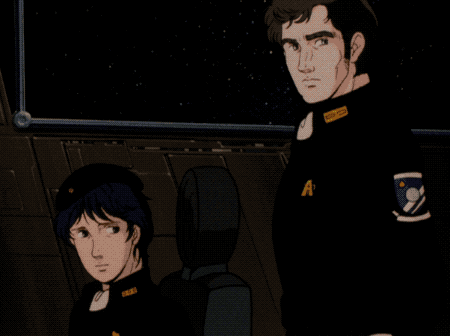
Asking first for one hour and then amending it to two makes it sound like she sees two whole hours as indulgent. Seriously Frederica, a true professional could pull herself together in fifteen minutes max.

Notice how hesitant and awkward Yang is in this scene; in the gif above he checks his impulse to comfort her with a hand on her shoulder, and here he haltingly resorts to trite words of encouragement. Both his sincere concern for her and his discomfort and fear of crossing any professional boundaries are clear.
Sure enough, by the end of the episode Frederica is back to dispassionately performing her adjutant duties, and brushes off Yang’s concerned look with assurances that she’s fine and keeping busy.

She is still visibly downcast here, but again, Yang doesn’t feel comfortable pressing further when she doesn’t want to discuss it.
And that’s that. The season is over for the Alliance, and (spoiler) Frederica never mentions her father’s death again or seems at all outwardly traumatized by this whole sequence of events. Two hours of lying in bed looking at a photo and crying, just two hours to “compose” herself, and then seamlessly back to work. What’s really salient here isn’t just her stoicism; it’s how clearly she’s exerting conscious effort to push back her emotions and refrain from letting them get in the way of her job. She’s obviously struggling—that’s clear in her downcast gazes early in the episode, her trembling reaction to the news, and her carefully controlled but still dejected expressions at the end. But her work seems to come above everything; just as not getting fired was her main visible concern when her father first overthrew the government, her effort in this episode is directed toward not spending more than two hours away from her job of giving Yang papers to sign.
Which brings us, finally, to an important question about Frederica, which I confess I’ve spent the whole season somewhat skirting around:
….What the hell is her deal??

Frederica is, at this point, a bit of an enigma. She feels like a main character, both as one of the primary assistants to Yang and as a clearly marked Potential Love Interest—treated blatantly as such by her father, Schenkopp, and Yang himself (more on that below); and yet, we’ve been through a whole season and not once has she made a single decision that affected the outcome of events, or expressed an opinion that differed from the people around her. We haven’t seen her do anything just for fun or discuss her hobbies or personal life (beyond her eight-year adoration of Yang).

This contrasts with Julian, whose identity also revolves around his role in Yang’s life and who also hasn’t been in a position to drive the action yet; but we’ve seen him taking care of Gensui, playing 3D chess, and here entertaining the Cazellnu girls. Even the several times we’ve seen him in civilian clothes all subtly build personality; we’ve only seen Frederica out of uniform in El Facil flashbacks. (From episode 16.)

Even Konev, with a total of about five minutes of screentime so far, feels in some ways more fleshed out than Frederica, with his love of wordplay and crossword puzzles as well as his habit of betting on battles with Poplan. And of course Poplan is shown here engaging in his favorite hobby of uhh, acting super heterosexual the moment right before a battle I guess? (From episode 21.)
Frederica graduated second in her class at the military academy, but we’ve never been told anything about her career aspirations or what she envisions for her future. Being the adjutant to the commander of the Iserlohn forces at only 23 years old might in fact be super impressive (I’m not an expert on how promotion through these various military positions works); but while we’re told repeatedly that she’s great at her job, it’s a job that seems to be all about executing someone else’s decisions.

Like Julian, Frederica’s most salient skills fit into gaps in Yang’s own skillset; in Julian’s case it’s housework and physical combat, while in Frederica’s it’s logistics and technology. (From episode 19.)
All of which is to say, it’s difficult to know much about Frederica right now by just looking at her, herself. She is defined so far by her competence at and dedication to her job, her history of idolizing Yang, and beyond that mainly by negatives: lack of arguments with anyone, lack of questioning other people’s decisions, lack of glimpses into her life outside of work, lack of extreme displays of emotion—shown most notably in this episode with the effort she puts into not letting her father’s death by suicide interfere with her duties.
Frederica and Gender Roles

Meanwhile in the Empire... (From episode 18.)
Since we don’t have a lot of information about Frederica herself, it’s interesting to compare her to other characters in narratively similar roles. One of Frederica’s distinguishing features is that she’s a woman operating in an almost entirely male sphere; indeed it’s tempting to throw up one’s hands and attribute her lack of exercising any narrative agency or pursuing any agenda unrelated to a guy she has a crush on as simple lazy sexism on the part of the creators. But (repeat after me) this is LoGH, and before we jump to that conclusion the creators deserve for us to try to look deeper. And as soon as we glance around at the other women we’ve met so far, we find, well…

...Jessica, who also filled the Potential Love Interest narrative slot for part of the season; but unlike Frederica we got to see her have substantive conversations with Yang about their views on the war and Alliance politics, and she also pursued her own political and activist goals independent from Yang’s or anyone else’s agenda. (From episode 21.)

...And Hilda, shown here approaching Reinhard, the rising political and military star of the Empire, and talking him into giving her a written guarantee that her family will be well taken care of once he overthrows the current social order. God damn Hilda is badass. (From episode 18.)

...And Magdalena, who unlike Jessica and Hilda (and Frederica) does not throw herself into traditionally male realms, but embraces her life as a noblewoman and navigates it with her own personality and values. Here we see her fuck with poor Kircheis while her minions look on; she’s also one of the few among the nobility who’s tried to be a real friend to Annerose. I love how Magdalena (and Hortence on the Alliance side—be patient okay) provides an example of a woman seeming to thrive without following a more typically (for their society) masculine path. (From episode 9.)
So, no: While the world of LoGH is certainly male-dominated, this show knows perfectly well how to imbue its female characters with aspirations, agency, points of view, and personalities that aren’t defined by the men around (or in power over) them. So when after a whole season Frederica still seems primarily defined by what she’s hidden from us, we should pay attention to this as a conscious choice by the writers.

I said we haven’t seen Frederica push her own agenda or disobey orders but that isn’t entirely true: The one time she did was this attempt to get Yang to take better care of his physical health during a battle. By appealing to Julian’s authority. Unsuccessfully—the battle starts back up and Yang brushes her away and says he’ll eat later. Whatever the precise opposite of the Bechdel test is, I think this scene passes it. (From episode 15.)
As I struggled to piece together a portrait of Frederica in my mind from what we’ve seen this season, the list of her prominent traits started to sound rather familiar: working to keep her emotions below the surface; silent in meetings; never openly ambitious; rarely making jokes; focused on performing her duties at all costs (including uh, getting her boss coffee tea with brandy). Spend a few minutes googling around for articles on struggles women face in predominantly male careers and you’ll find pretty much this exact list. While Hilda is just beginning to throw herself into politics by aligning with Reinhard, and Jessica pivoted into activism from teaching piano after her love interest was fridged, Frederica by this point has come all the way through the military academy and spent time after that doing information analysis before ending up working under Yang. She’s been studying and working (very successfully!) in an almost entirely male environment for about seven years by now. Could her all-business, eager-to-please, show-no-weakness style have been learned in response to the general sexism of that environment in some way? That’s certainly not unrealistic, and worth keeping in mind.

In the brief flashback montage that we see while Frederica lays in bed remembering her father, we get a couple of further glimpses into their dynamic. Like most things about Frederica, why she chose to join the military in the first place is a mystery; was it to make her father proud?

As far as we know, Frederica was close to her father; but remember that we’ve seen him appear to blatantly matchmake her with her new boss, which is, well, messed up. Contrast this with Hilda’s father, who we see openly encourage her to be politically ambitious in her own right.
Frederica and Yang (and heteronormativity)

Frederica...what even is that expression? You know if you have aspirations of getting closer to Yang personally you’re gonna have to get used to him going off on monologues about the nature of war, right? It’s kind of his thing. (From episode 16.)
There will be plenty of time to talk about the dynamic between Frederica and Yang, but while I’m laying the groundwork for Frederica Discourse heading into season two, it’s worth summarizing a bit. We haven’t seen them interact much at all so far outside of the context of work; and within that context, from the beginning Yang has been very obviously conscious of the fact that, unlike everyone else around him in his daily life, she is a woman.
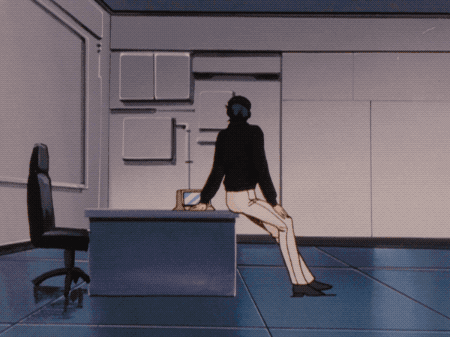
This was not Yang’s finest moment, completely failing to contain his surprise that his new adjutant was female. Here we see the cycles of heteronormativity and sexism: Yang is a victim of societal norms, as we’ve discussed; but he’s also helping perpetuate them, since his stress about the mere potential of romantic (sexual) expectations being placed on him means that he lets the gender of his adjutant affect his behavior toward her more than he should. (From episode 6.)

...Not that he’s about to let societal norms about how to behave in front of women get in the way of his naps, of course.

This is the one time all season that Yang directs one of his musings on war at Frederica. Between her dumbfounded gaze (see screenshot above), his embarrassment after he remembers she's listening, and her quick transition back into fetching him tea rather than engaging with what he said, it's clear neither of them is comfortable with this interaction. There’s something (hmmm what could it be??) stopping them from having the same kind of friendship Yang has with Cazellnu, Dusty, Schenkopp, even Julian. (Both from episode 16.)
But Frederica isn’t just a woman who happened to become Yang’s adjutant; she has a very specific history with him, which is the one thing in her life she’s not very shy about.

When Julian asks Frederica about her memories of El Facil in episode 17, he points out that Yang might have ended up happier if he hadn’t become a “hero,” but Frederica is quick to object that Yang would have just been captured by the Empire if he hadn’t successfully evacuated the planet. I don't know if that’s true—could Yang not have escaped himself, as his commanding officers did, without also evacuating all three million civilians? What is true is that Frederica herself, and her mother, would have likely been captured or killed. (From episode 17.)
Her first meeting with Yang on El Facil wasn’t just about thinking his dislike of coffee was cute: He saved her life. He is very literally her hero, and she has a deep personal stake in this major turning point in his life which, as Julian points out, was not entirely positive for him. Since we first met Yang in “My Conquest” we’ve known that his actions on El Facil brought him more attention than he ever wanted—specifically romantic attention from women that he didn’t feel interested in or comfortable responding to; Frederica is the love letters he didn’t answer in “My Conquest” brought to life. And she’s also his direct subordinate. While their working relationship seems functional and positive enough, it’s no wonder that personally it feels strained.

Icebergs Canon: The three pink ones are from Frederica.
Julian
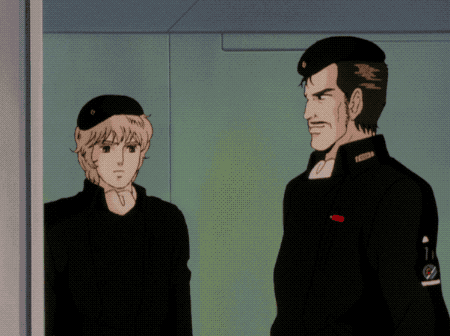
Julian Mintz. Age: 15. Likes: Yang; tea; 3D chess; Yang; the color purple; cats; Yang; pointing guns at people; housework; Yang; Kircheis. Dislikes: Baghdash.
After struggling to understand what’s going on behind Frederica’s carefully controlled exterior, Julian is a breath of fresh air. As always he wears his heart completely on his sleeve, to the extent that I feel a bit invasive watching him.

Yesss, demolish it all! Julian’s into it.

“God damn Yang has a great ass.” —Julian’s Iserlohn Diary, the unpublished pages ...Okay not actually, but come on, we don’t need to read his diary when that open-mouthed smile already says everything.
I’ve so far hedged a bit about declaring Julian’s obvious idolization of Yang to be an official crush, but hell—no one in the history of the world has ever watched someone clumsily burn his hands and then jump over a chair with that specific appreciative smile when they didn’t have a crush, so I’m ready to call it. Congratulations Julian, you are hereby Officially Canonically Smitten.

Just like his probing about Yang’s interactions with Jessica in episode 10, here we see Julian a couple of times in the background clearly paying attention to the dynamic between Yang and Frederica, and specifically to Yang’s awkwardness in knowing how to comfort her about her father’s death. While it’s subtle, in context this slightly heightened interest in Yang’s relationships with women is another hint that Julian’s own feelings are at least slightly romantically tinged.

Of course, Julian is also friends with Frederica (after all, he has the most in common with her…) and probably also worried about how she’s doing. But we don’t see him interact with her directly at all; we just see him look thoughtfully from her to Yang.
Now, despite my having declared Julian’s feelings a crush, I’m not claiming that he actually frames it to himself that way; after all not only do they live in a deeply heteronormative society, but their situation in particular is obviously...well, complicated. As I’ve discussed, Julian has always treated Yang as a mentor or commanding officer rather than as family; but the power dynamic remains, as well as the age difference, and I don’t imagine that Julian is in fact doodling “Julian <3 Yang 4 ever” in his notebooks and dreaming of a big traditional wedding. But crushes on mentor figures are common; and I believe we see enough in his gazes to tell us that his appreciation of Yang is the sort that makes his heart race in a way that constitutes a crush, whether or not he’s able to put it to himself in those terms right now. How these feelings, and his own awareness of them, evolve as we head into the next season is definitely something we’ll be looking out for.

In the meantime, please enjoy this gif that I randomly just love for the body language animation—the contrast between Yang’s slouch and Julian standing eagerly at attention; Julian skipping so nimbly out of the room while closing the door behind him. Also hmm, I think I’ve seen that lamp at Ikea...guess some things don’t change in 1600 years.
Stray Tidbits
Back in episode 16 Admiral Sitolet told Yang he was going to retire and start beekeeping, and hey, looks like he’s followed through! At least someone in this miserable galaxy is successfully living out their dream.

I will never watch the scene of Yang describing his plan to destroy the necklace without laughing out loud. I have no idea whether his application of the theory of relativity is uhh, scientifically sound—didn’t Yang flunk every class except history, or something?—but what I’m more interested in is where the fuck they came up with dozens of gigantic chunks of ice on such short notice.
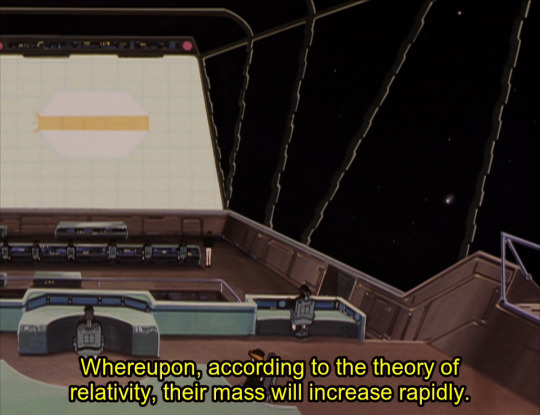

Speaking of which, I love this screenshot and I encourage you to use it in a wide range of contexts.

Meanwhile, welcome to the Alliance, Merkatz and Schneider! We’re thrilled to have you, but I suppose this means it’s now my job to try to figure out what exactly is going on here... *thinking emoji*
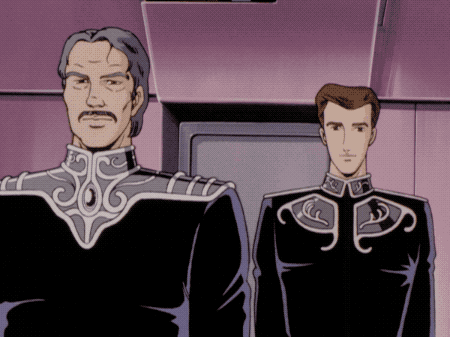
Come on Greenhill, everyone knows never read the comments.

#Legend of Galactic Heroes#Legend of the Galactic Heroes#author: Rebecca#Alliance#Frederica#Yang#Julian#gender#heteronormativity#beekeeping#dammit Cazellnu#Merkatz's eyebrows
13 notes
·
View notes
Text
Why Some Men Don’t Work: Video Games Have Gotten Really Good
Quoctrung Bui, NY Times, July 3, 2017
If innovations in housework helped free women to enter the labor force in the 1960s and 1970s, could innovations in leisure--like League of Legends--be taking men out of the labor force today?
That’s the logic behind a new working paper released on Monday by the National Bureau of Economic Research. The paper--by the economists Erik Hurst, Mark Aguiar, Mark Bils and Kerwin Charles--argues that video games help explain why younger men are working fewer hours.
That claim got a lot of attention last year when the University of Chicago published a graduation speech given by Mr. Hurst at its business school, where he discussed some of his preliminary findings. He says the paper is now ready to be read by the public.
By 2015, American men 31 to 55 were working about 163 fewer hours a year than that same age group did in 2000. Men 21 to 30 were working 203 fewer hours a year. One puzzle is why the working hours for young men fell so much more than those of their older counterparts. The gap between the two groups grew by about 40 hours a year, or a full workweek on average.
Other experts have pointed to a host of reasons--globalization, technological change, the shift to service work--that employers may not be hiring young men. Instead of looking at why employers don’t want young men, this group of economists considered a different question: Why don’t young men want to work?
Mr. Hurst and his colleagues estimate that, since 2004, video games have been responsible for reducing the amount of work that young men do by 15 to 30 hours over the course of a year. Using the recession as a natural experiment, the authors studied how people who suddenly found themselves with extra time spent their leisure hours, then estimated how increases in video game time affected work.
Between 2004 and 2015, young men’s leisure time grew by 2.3 hours a week. A majority of that increase--60 percent--was spent playing video games, according to government time use surveys. In contrast, young women’s leisure time grew by 1.4 hours a week. A negligible amount of that extra time was spent on video games. Likewise for older men and older women: Neither group reported having spent any meaningful extra free time playing video games.
The analysis excluded full-time students, and showed that the amount of time young men spent on household chores or child care was not going up.
In some ways, the increase in video game time for men makes sense: Median wages for men have been stagnant for decades. Over the same period, the quality of video games has grown significantly. In the 1990s, games like Mario Bros. were little more than eight-bit virtual toys. Today, you and your closest buddies can go on quests in games like World of Warcraft that can last for days.
Large, social video games did not become hugely popular until the release of World of Warcraft in late 2004. These games are very different from more rudimentary games like Pong and Space Invaders that older men grew up playing.
Experts say that the social aspect is particularly important.
“Games provide a sense of waking in the morning with one goal: I’m trying to improve this skill, teammates are counting on me, and my online community is relying on me,” said Jane McGonigal, a video game scholar and game designer. “There is a routine and daily progress that does a good job at replacing traditional work.”
Adam Alter, a professor of marketing and psychology at New York University who studies digital addiction, highlighted the fact that, unlike TV shows or concerts, today’s video games don’t end.
Most forms of entertainment have some form of a stopping cue--signals that remind you that a certain act or episode is ending, like a commercial or a timer. “Many video games don’t have them,” Mr. Alter said. “They’re built to be endless or have long-range goals that we don’t like to abandon.”
These characteristics make video games attractive to many people, and 41 percent of the American game-playing population are women, according to the video gaming advocacy group Entertainment Software Association. But this data showed no increase in video game time for women.
Mr. Hurst argues that women are more likely to choose the types of mobile games that people tend to play while doing something else, like riding in a car or standing in line. The time use survey captures only people’s primary activity, not the secondary nature of casual mobile games like Candy Crush.
The analysis also did not count activities like using Facebook and Snapchat or browsing the web. Time spent on those activities did not grow as much as time spent on video games.
Some economists are skeptical of the conclusions, pointing out that the labor force participation rates for young men in other countries where video games are popular, like Japan, have not fallen in similar fashion.
But if we accept the authors’ claim that some segment of men is dropping out of the labor force to play games, is that necessarily a bad thing?
Young non-college-educated men--the group most likely to be home playing games--are more likely to say that they are happy than similar men a decade ago. Older non-college-educated men are the unhappier ones.
According to Mr. Hurst, young men may simply be shuffling around the years in their life that they want to work. “Why not have a little fun in your 20s and work in your 80s?” he said.
Of course, that assumes that young Americans who choose video games over work--a group for whom there is no historical data--will be able to find good jobs someday. And that they won’t be seduced by the kinds of games available in 2070.
0 notes
Text
The digitization of sport as a learning model …
The worldwide pandemic is modifying not only labor mechanisms, but also educational ones. For this reason, various supports began to be developed that tend to involve sport as part of that learning. Clubs and Federations are reinventing themselves in their activities after this crisis.
Sports institutions hereby adopt video game programs to be more attractive to athletes. For example, in English Chelsea, the boys from the lower divisions can check their plays on a computer from the training center. And some practices are also being gamified (using digital technologies), to make them more modern.
Universities also participate in this move. In the United States, where it is so closely linked to sports, they already present technological and video game strategy as part of the institution's assets. In Russia, they were included as extracurricular activities in many Moscow schools this year as a pilot test.
And from an action carried out in Barcelona, it was found that children with autism spectrum are also the most interested in this type of entertainment. One of the ideologues of the project is Federico Winer, Senior Digital Leader and Researcher at Loughborough University, London, with a deep understanding of how the humanities and technologies coexist.
“A ten-year-old boy – explains Winer – consumes more than 20 hours of play per week in digital format. In this program, digital competences are cross-sectional work, so training is permanent through different games, and not limited to a single orientation. The idea is that children enjoy research, exploration and creation through various significant experiences that improve their individuality and potential group, generating positive interactions of children and parents, and the development of skills they will need in the competitive job market of this new digital age ”.
The development of this was born in 2013, with an exhibition in museums on 40 years of sports games, in particular soccer. The traveling exhibition called “Evo Football” went through about seven cities. “It occurred to me there – Winer expands – that the educational part could be better exploited, with children who are so attracted to video games, with games that leave more than the sensation of playing. With the premise that it is accessible to All of them. There I selected four games, which what they do is enhance different aspects of education: literature, history, mathematics, and physical coordination. “
The first test was carried out with about 100 boys, in a school in Catalonia, aged between five and 12 years. The response was very positive. “Within that spectrum there were about eight autistic boys, who were the most excited about the program, because they found in these video games a way to communicate with their peers, with a shared language, in which they excelled a lot. In general, many of the autistic boys are good at handling numbers. And since the games are very mathematical, they solve it very well ”, explains the creator of the program.
And he adds: “The ones that are programmed are fantasy games. And they generate a point of interaction from the point of view of learning. These are different from sports games because they are more psychomotor ”.
Q: Do combat games incite violence?
– No serious academic study finds a relationship between video games with any factor of violence, and violence in real life. There is nothing wrong with having battle games for the education of boys. And there are also many academic research papers on the benefits of actively using video games in education, and even physical education.
In the event that these games can be incorporated into different curricula permanently, they would be ideal for situations like the one the planet is going through with the Covid-19. “It would be a playful way to keep learning, outside of what educational games are, which bores them a little,” says Winer.
Games, in order to be incorporated into schools, must first be validated with psychologists, and with the curriculum in general of other subjects. The objective is that they can be linked to them. “Some have asked me to present it as an after-school activity, and others within one hour a week in the digital education curriculum. The success would be that it can begin to be implemented in the elective cycle next year, “said the protagonist.
The program can not only be used in schools, but also in clubs, autistic associations, or neighborhood associations. The development team offers training to the boys' guides, and the technological supports that must be downloaded to the computers. Winer clarifies that just as it had great acceptance in Ukraine, the intention is to be able to transfer it to Argentina, his country of origin. “I have a family here, I was educated here, and I know the value of public school, and what can change one's life by acquiring certain skills. From a game, which can be sports, everything can be developed ”, he explains.
Project Benefits
The software is free, not only in price but also in the way that schools and entities can use it. This is ethically important for different educational environments, as software piracy and prohibitive licenses that increase the technology gap are avoided. Players and coaches decide when to update the versions, and remain independent of manufacturer influences. Also, they can get involved in creating new levels, characters and games to actively participate and gain digital knowledge.
According to a study by the University of Sheffield, the use of these technologies represents savings of up to 75% in cost compared to traditional gaming infrastructures. It is more environmentally friendly as it helps reduce the carbon footprint. These games reuse old hardware. They are solid, stable and reliable systems that work, without virus risks.
Computer and Internet penetration varies significantly from one region to another in the world. In North America, 78.6% of the population has internet access, compared to just 15.6 percent in Africa. In South America 59%. It is estimated that only 0.1% of the population knows how to program. If the use of digital tools is promoted through games from early childhood, it is possible to advance the percentage of code developers, which generate high added value in the economy.
The post The digitization of sport as a learning model … appeared first on Cryptodictation.
from WordPress https://cryptodictation.com/2020/04/18/the-digitization-of-sport-as-a-learning-model/
0 notes
Text
Brazil is emerging as a world-class AI innovation hub
Brazil’s government has big plans for AI, despite having come late to the party. In Oxford Insights’ AI Readiness Index 2019, Brazil was ranked 40 out of 192 countries, a sign that the South American powerhouse is moving up in the AI world. The report looks at how ready countries are to take advantage of the AI technologies PwC forecasts will add $15 trillion to the global economy by 2030.
The 2019 report also cautions that the “Global South could be left behind by the so-called fourth industrial revolution.” But even as some of the planet’s richest nations, including Canada, China, Germany, Japan, Singapore, and the U.S, have become recognized AI innovation hubs, according to studies by Deloitte and others, South America — led by Brazil — is rapidly emerging as a leader in AI-enabled businesses.
Brazil’s future economy is banking on a big contribution from AI technologies, and the country is leading the rest of Latin America, based on a proprietary AI Global Vibrancy Tool used to compile the recent 2019 AI Index report from Stanford University. The study found that during the last four years Brazil has shifted into high gear as one of the top five countries in the world with the fastest growth in AI hiring.
Accenture forecast that by 2035 AI will boost annual growth rates across South America by about one full percentage point of GDP. For Brazil, already the largest Latin American economy, that prediction would “boost the 2035 GVA of the Brazilian economy by $432 billion, which represents an increase of 0.9 percentage points in comparison with the baseline scenario.” Other Latin American countries stand to gain AI-driven boosts in annual GVA in that same time frame — notably $78 billion in Colombia, $63 billion in Chile, and $59 billion in Argentina.
“Artificial intelligence offers South America a long-awaited opportunity to leapfrog toward greater levels of innovation, productivity, and socio-economic progress,” wrote Armen Ovanessoff, principal director of Accenture Research, in the report.
Where opportunity lies
One area that’s particularly ripe for AI innovation is the financial services sector that was hit hard, and then heavily regulated, after major bank crashes in the 1980s and 1990s. Brazilian financial tech companies creating workarounds to the many bureaucratic hurdles and old ways of doing things are now booming in Brazil, according to CB Insights, LAVCA, and other organizations tracking hot investment sectors there. Other fast-growth sectors that AI is redefining in Brazil include ecommerce, on-demand delivery, logistics, and digital media and entertainment.
Fortunately, the Brazilian population is tech savvy and already uses a lot of online services, which means AI technologies have a greater chance of impacting industries on a scale that matters. Mary Meeker’s Internet Trends 2019 report ranks Brazil’s population as the fifth largest group of internet consumers in the world. A global consumer insights survey by PwC in 2018 found that 59% of Brazilians plan to purchase an AI device, the highest score amongst the top 10 countries in the poll.
After the U.S., Brazil has the largest number of social media users on Facebook, Twitter, and YouTube, per Kwintessential. Mobile devices outnumber people, and a majority of Brazil’s more than 211 million citizens are avid online shoppers and consumers of internet entertainment, according to PagBrasil. Of the 149 million internet users in Brazil, 139 million are mobile, and Brazilians downloaded more than 7.3 billion apps in 2018, ranking it top four in the world, according to Forbes.
Two important applications for AI are tackling the traffic congestion issues created by Brazil’s massive cities and reaching people across a land mass of 3.28 million square miles. AI has an opportunity to make local and cross-country delivery of products quicker and more efficient, which would mean reduced pollution, lower costs, and less traffic.
New R&D labs
Brazil and other large Latin American countries are catching up with their counterparts when it comes to funding AI innovation. The Brazilian government recently announced the creation of an AI R&D network of eight labs.
During the launch announcement in November, Marcos Pontes, Brazil’s minister of science, technology, innovation, and communications, said the eight R&D labs will boost “the ability to reason, plan, and think about Brazil’s future and our ability to create tools to solve problems and improve the quality of life.”
One of the new labs will involve the Brazilian Army and will focus on edge AI technology in areas like cybersecurity. The other seven R&D centers will work on breakthroughs tied to the country’s national IoT plan, which is focused on its four main verticals: agribusiness, health care, manufacturing, and smart cities.
Brazil understands that to keep up in the international AI race, it needs to nurture and retain strong domestic talent. Beyond the lure of bigger paychecks, the best of the best are drawn to opportunities where they can solve the most important challenges of our time.
To keep talent in the country, IBM is set to launch an AI lab in São Paulo in 2020. It will be the first Latin American-based institute from IBM’s AI Horizons Network, created by the company in 2016 for collaboration between universities, students, and IBM researchers. It will be run in conjunction with the São Paulo Research Foundation (FAPESP) and focus on solving real problems in Brazil, such as the best use of natural resources and innovation in agribusiness and health care.
Addressing the AI skills gap
According to an IBM study released in September, “the skills gap is not a myth, but can be addressed with real solutions.” The researchers — who polled 5,670 global executives in 48 countries — found that as many as 120 million workers in the world’s 12 largest economies may need to be retrained or reskilled to succeed in an age of AI and intelligent automation.
A Gartner study released at the beginning of 2019 found that 37% of organizations have implemented AI in some form but struggle with acute talent shortages. Despite a current AI skills gap, Gartner found that the number of enterprises employing AI grew 270% over a four-year period.
Google’s Peter Norvig, a legendary AI expert, spoke about the skills gap and competition for top AI talent at the recent BayBrazil conference in Silicon Valley. He said he meets with many startups that complain they can’t hire the top AI experts from MIT or Stanford because the big tech companies get to them first.
When he hears this concern, Norvig offers sage advice via an analogy. “If a new restaurant owner told me, ‘What the business needs most now is a PhD in stove design from MIT,’ that’s really a faulty way of thinking. In reality, what that restaurant owner really needs is a chef who knows how to cook tasty food who will tell the owner what stove to buy. You don’t need to design a new stove from scratch.”
The issue now is training more people to understand not only how to use AI tools but also how to implement them at every level of business. With both the Brazilian government and the private sector boosting investment in AI research, that skills gap will begin to close.
Going forward, AI will play an essential role in how people, not machines, make decisions. For Latin America — led by Brazil — the technology promises to create a significant competitive advantage in the commercial sector, faster GDP growth, broader societal benefits, and more socio-economic progress for all.
Bruno Henriques is the VP of Growth and AI at iFood, Latin America’s largest food tech company.
The post Brazil is emerging as a world-class AI innovation hub appeared first on Actu Trends.
0 notes